
One of the world’s leading publishers of printed classical and educational music.

William Walton Catalogue
- Text
- Walton
C22 Concerto for Viola
C22 Concerto for Viola and Orchestra 29 autograph full score, for reference only and not for general use. In a reply dated 1 April 1949 Alan Frank of OUP wrote and offered the full score (original version) of the Viola Concerto (OUP archive). Instrumentation: picc.2.2.ca.2.bcl.2.cbn/4.3.3.1/ timp/strings (‘The strings are to play only 4/3/2/2/2, except where the sign (+) indicates that the full body of strings is to be used.’) Dedication: To Christabel [Mrs Henry McLaren, later Lady Aberconway] Duration: 23 minutes First performance: London, Queen’s Hall, 3 October 1929 (Promenade concert, broadcast by the BBC on the Daventry Experimental Station); Paul Hindemith and the Henry Wood Symphony Orchestra, conducted by William Walton First European performance: Berlin (Witzlehen), Radio HQ, 24 April 1930; Lionel Tertis and ad hoc orchestra, conducted by William Walton. (A copy of the day’s listings for German Radio can be found in the BBC’s Written Archive Centre. It reveals that the original soloist in the concerto was to be Hans Mahike, a member of the Havemann String Quartet and a professor of violin and chamber music at the Berlin Musikhochschule.) First American performance: The original version was never performed in the USA (see below for further details). A letter reveals that Walton sent Koussevitzky the score and viola part in December 1929 for the first American performance by an unnamed soloist and the Boston Symphony Orchestra (Library of Congress, Washington, DC). Other early performances: London, Queen’s Hall, 21 August 1930 (broadcast by the BBC in the National Programme); Bernard Shore and the BBCSO, conducted by William Walton • Liège, Music Conservatory Concert Hall, 4 September 1930; Lionel Tertis and unnamed orchestra, conducted by William Walton • London, Queen’s Hall, 26 March 1931 (RPS concert); Lionel Tertis and the Royal Philharmonic Orchestra, conducted by Ernest Ansermet (the first occasion on which Tertis performed the concerto in England) • London, Queen’s Hall, 10 September 1931; Lionel Tertis and the BBCSO, conducted by William Walton • Manchester, Free Trade Hall, 14 January 1932; Lionel Tertis and the Hallé Orchestra, conducted by Sir Hamilton Harty • Birmingham, Town Hall, 21 February 1932 (broadcast by the BBC on the Midland Regional Programme); Lionel Tertis and the City of Birmingham Symphony Orchestra, conducted by Leslie Heward • Worcester, Cathedral Church of Christ and St. Mary, 8 September 1932 (Three Choirs Festival concert); Lionel Tertis and the London Symphony Orchestra, conducted by William Walton. (At this concert Walton met Sir Edward Elgar.) Publication: full score: OUP, 1930 at 21s • miniature score: OUP, 1938 at 4s • WWE vol. 12, pp. 1–146 • arrangement for viola and piano: OUP, 1930 at 7s 6d • solo viola part, edited by Lionel Tertis: OUP, 1930 at 1s 6d (later reprinted to include the 1961 revisions and published in March 1964 at 30s. The following appeared on the title-page: In 1961 the composer rescored this work for a reduced orchestra and authorised that both the original and the new orchestration may be used; however, the composer strongly prefers the new version. In the course of his rescoring the composer made certain changes in tempo indications, dynamics etc. affecting the work as a whole, and these alterations have been incorporated in the present reprint of the piano score and solo part. The indications of instrumentation printed on the piano part refer to the original orchestration, but as the actual music remains basically unchanged in both orchestrations this piano part may still be used for rehearsal purposes. Indications of instrumentation for both orchestrations are printed in the solo part, with those where the reduced version differs from the original in square brackets. Bibliography: Christopher Wellington, WWE vol. 12 • C. A. Betancourt, William Walton’s Viola Concerto: A Methodology of Study (DA diss., Ball State University, Muncie, Indiana, 1997) • David Dalton, Playing the Viola: Conversations with William Primrose (Oxford: OUP, 1988), 197–201, 211 • Scott Goddard, The Concerto, ed. Ralph Hill (Harmondsworth: Penguin, 1962), pp. 392–6 • Basil Maine, Twang with Our Music: Being a Set of Variants to Mark the Completion of 30 Years’ Practice in the Uncertain Science of Music Criticism (London: Epworth Press, 1957), 112–13 • Robert Meikle, ‘Viola Concerto’, Craggs ML, pp. 78–81, 91–3 • William Primrose, Walk on the North Side: Memoirs of a Violist (Provo, Utah: Brigham Young University Press, 1978), 89, 99, 101,113, 115, 182,185,186 • Jürgen Schaarwächter, ‘Auf der Suchenach einem Interpreten: William Waltons Violakonzert und Paul Hindemith’, Hindemith-Jahrbuch Annals Hindemith 2006/XXXV (Frankfurt am Main, Hindemith-Institut; Mainz and London: Schott, 2006), 166–85 • Lionel Tertis, Cinderella no More (London: Neville, 1953), 38, 66–67; reprinted in My Viola and I (London: Elek, 1974), 36–7 • Donald F. Tovey, Essays in musical analysis, vol. 3, Concertos (London: OUP, 1935), 220–26 • Abraham Veinus, Victor Book of Concertos (New York: Simon and Schuster, 1948), 417–19 • Christopher For perusal purposes only
30 C22 Concerto for Viola and Orchestra Wellington, ‘William Walton’s Viola Concerto: A Mystery’, in An Anthology of British Viola Players, ed. John White (Colne: Comus, 1997), 245–6 • John White, Lionel Tertis: The First Great Virtuoso of the Viola (Woodbridge: Boydell, 2006), 105–110, 142, 149 • BPost, 18 Jan 1932, p. 8 (E. Blom); JAVaS 17 (2001), 31–7 (C.Taylor); 22 (2006), 13–18 (J. F.Dunham); The Listener, 17 Feb 1937, p. 335 (C. Lambert); 12 July 1945, pp. 52–3 (W. McNaught); MG, 15 Jan 1932, p. 8 (N. Cardus); MT 70 (November 1929), 1029–30 (E.B.); 71 (October 1930), 898–902 (E.E.), 934–5 (B.M.); 72 (May 1931), 453 (W.McN.); 73 (March 1932), 266 (B.M.); ST, 6 Oct 1929, p. 7 (E.N.); Times, 4 Oct 1929, p. 12; 6 Sept 1930, p. 8; 27 March 1931, p. 12; 21 Jan 1932, p. 10; 9 Sept 1932, p. 8; 10 Sept 1932, p. 8. Recordings: 78 Frederick Riddle / London Symphony Orchestra / Walton (recorded Decca Studios, Thames Street, London). Decca AX199–201 (1938); Dutton Laboratories CDAX 8003 (1993) • William Primrose / Philharmonia Orchestra / Walton (recorded No.1 Studio, Abbey Road, London, 22–23 July 1946). HMV DB 6309–11; HMV DB 9036–8 auto (1946) LP, CD William Primrose / Royal Philharmonic Orchestra / Malcolm Sargent. Columbia ML 4905 (1954); Philips ABL 3045 (1955) • William Primrose / Philharmonia Orchestra / Walton. Imprimateur IMP6 (1982)/EMI EH29 1276 1 (reissue of the 78 rpm, 1987); EMI CDH7 63828 2 (1991); Pearl GEMMCD 9252 (1997) Note: In a letter to Siegfried Sassoon (dated [5 December 1928], WW archive), Walton wrote that ‘I have been working hard at a Viola Concerto suggested by Beecham and designed for Lionel Tertis. It may be finished by Christmas and is I think by far my best effort up to now.’ On 2 February [1929], Walton was telling Sassoon that ‘I finished yesterday the second movement of my Viola Concerto. At the moment, I think it will be my best work.’ Over a year later on 3 July 1930, Walton informed Sassoon that ‘Hindemith is playing it on 3 October, myself with the “bâton”’ (WW archive). Revised version (1st) Holograph: Beinecke: GEN MSS 601 (FRKF 586a) • A BBC Symphony Orchestra Concert draft can be found in the BBC Written Archives which reveals that in January 1937 the BBC was considering an invitation ‘to William Primrose to produce Walton’s new version of his Viola Concerto instead of repeating Tertis in the old one’ (emphasis added). In fact, Tertis played the concerto at a BBC concert in Queen’s Hall on 24 February 1937—a celebration of his 60th birthday and his last performance, as he was retiring because of rheumatism in his bowing arm. The BBC Symphony Orchestra was conducted by Ernest Ansermet and this concert was broadcast on the BBC National Programme. • Primrose later played the concerto at a Promenade concert on 2 September 1937, with the BBCSO conducted by Henry Wood, but whether this was the new version is unclear; no reviews of the concert mention the fact. • According to a Philadelphia Orchestra programme note (3 March 1944, when the concerto was played by William Primrose with the Orchestra, conducted by Eugene Ormandy), ‘Mr. Primrose and William Walton made a thorough revision of the score [shortly before the war], deleting and adding, and re-writing the solo part. The latter, in its new form, differs materially from the one in the score, and, according to Mr. Primrose, has never been published.’ First American performance: New York, NBC Studio (Radio City), 14 May 1938; William Primrose and the NBC Symphony Orchestra, conducted by Sir Adrian Boult. (A programme note mentions that the concert includes: ‘the introduction in this country of William Walton’s Concerto for Viola and Orchestra with William Primrose as soloist’. It also notes that although ‘William Primrose’s performance in this country with the BBCSO on 2 September 1937 was rebroadcast over a National Broadcasting Company network, this will be the premiere performance of the work in this country.’) Other early performances: London, Queen’s Hall, 15 September 1938; William Primrose and the BBC Symphony Orchestra, conducted by Sir Henry Wood • Minneapolis, Northrop Memorial Auditorium, 3 March 1939; Davis Dawson and the Minneapolis Symphony Orchestra, conducted by Dimitri Mitropoulos Bibliography: NY Times, 15 May 1938 (Section II), p. 2 (G.G.); Times, 3 Sept 1937, p. 10; 16 Sept 1938, p. 10 Revised version (2nd) ‘In 1961, the composer rescored the work for a smaller orchestra, using double instead of triple woodwind, omitting one trumpet and tuba, and adding a harp’ (from a note in the score). He also authorized that both the original and the new orchestrations may be used. Holograph: Beinecke Rare Book and Manuscript Library, Yale University: GEN MSS 601 (FRKF 586b) Instrumentation: 2(II + picc).1.ca.2(II + bcl).2/4.2.3.0/ timp/hp/strings For perusal purposes only
- Page 2 and 3:
General Editor: DAVID LLOYD-JONES C
- Page 4 and 5:
CONTENTS Introduction - James Brook
- Page 6 and 7:
Anyone taking this volume down from
- Page 8 and 9:
ORGANIZATION OF THE CATALOGUE This
- Page 10 and 11:
WILLIAM WALTON EDITION General Edit
- Page 12 and 13:
ACKNOWLEDGEMENTS I am deeply indebt
- Page 14 and 15:
Bibliographical abbreviations Add.M
- Page 16 and 17: SELECTIVE CHRONOLOGY 1866 11 Oct Lo
- Page 18 and 19: SELECTIVE CHRONOLOGY xix 1943 Feb o
- Page 20 and 21: SELECTIVE CHRONOLOGY xxi Nov Sympho
- Page 22 and 23: facsimiles For perusal purposes onl
- Page 24 and 25: facsimiles xxv For perusal purposes
- Page 26 and 27: facsimiles xxvii For perusal purpos
- Page 28 and 29: facsimiles xxix For perusal purpose
- Page 30 and 31: facsimiles xxxi For perusal purpose
- Page 32 and 33: facsimiles xxxiii For perusal purpo
- Page 34 and 35: List OF MAIN TITLES xxxv Romeo and
- Page 36 and 37: the catalogue For perusal purposes
- Page 38 and 39: C1 A Li t a n y partsong in four pa
- Page 40 and 41: Nos. 1-3 Date of composition: July
- Page 42 and 43: C9 Th e Pa s s i o n a t e Sh e p h
- Page 44 and 45: 16. Valse (‘Daisy and Lily’) Th
- Page 46 and 47: Passengers Only: A Social Tragedy i
- Page 48 and 49: Eskdale (tpt), Willem de Mont (vc),
- Page 50 and 51: Façade 2: A Further Entertainment
- Page 52 and 53: First performance: 24 January 1922
- Page 54 and 55: C12g Ballet in One Act (Based on th
- Page 56 and 57: 1. Tango-Pasodoblé 2. Swiss Jodell
- Page 58 and 59: C13 To c c a t a C14 Fantasia Conce
- Page 60 and 61: C17 PORTSMOUTH POINT 23 Date of com
- Page 62 and 63: C18 Ro m e o an d Ju l i e t Ballet
- Page 64 and 65: C21 Si n f o n i a Co n c e r t a n
- Page 68 and 69: First performance: London, Royal Fe
- Page 70 and 71: From 17 April to 23 August 1948, I
- Page 72 and 73: Other early performances: London, S
- Page 74 and 75: C28 Es c a p e Me Ne v e r music fo
- Page 76 and 77: Faber, 1996), 187-8 • David Vaugh
- Page 78 and 79: OCB 299-2 Cue 21-22 [David playing
- Page 80 and 81: C32 Dr e a m i n g Li p s music for
- Page 82 and 83: Duration: 7 minutes Instrumentation
- Page 84 and 85: First London performance: Queen’s
- Page 86 and 87: C37 Concerto for Violin and Orchest
- Page 88 and 89: C37 Concerto for Violin and Orchest
- Page 90 and 91: Publication: WWE vol. 3, pp. 1-99 (
- Page 92 and 93: (b) Incidental music for Uncle Harr
- Page 94 and 95: minute Galop (the right title under
- Page 96 and 97: of the shelter to meeting; Barbara
- Page 98 and 99: Division at this point, after he ha
- Page 100 and 101: y John Burrell. Broadcast on 7 Octo
- Page 102 and 103: Houldsworth Hall, 24 May 1943 (spec
- Page 104 and 105: Other versions C46a Christopher Col
- Page 106 and 107: A copy is also in the National Soun
- Page 108 and 109: of added brass, percussion and pian
- Page 110 and 111: First USA showings: Boston, Esquire
- Page 112 and 113: C50 Henry V 75 C50g Passacaglia:
- Page 114 and 115: 1946, p .4; 26 April 1946, p. 16; T
- Page 116 and 117:
duel; Entry of the court (with fanf
- Page 118 and 119:
Dedication: To Diana and Griselda [
- Page 120 and 121:
y the BBC on television and radio);
- Page 122 and 123:
expressed a strong wish to dedicate
- Page 124 and 125:
Principals: Calkas, High Priest of
- Page 126 and 127:
(D. Drew); Opera 14 (June 1963), 41
- Page 128 and 129:
Bibliography: Opera Canada 49 (Sept
- Page 130 and 131:
C63b A Shakespeare Suite from Richa
- Page 132 and 133:
C65 C65 Concerto for Violoncello an
- Page 134 and 135:
C68 Symphony No. 2 97 Commissioned
- Page 136 and 137:
Bibliography: David Lloyd-Jones, WW
- Page 138 and 139:
Recordings: CD Bach Choir / David W
- Page 140 and 141:
C76 Variations on a Theme by Hindem
- Page 142 and 143:
Holograph: Beinecke: GEN MSS 601 (F
- Page 144 and 145:
Dedication: To André Kostelanetz.
- Page 146 and 147:
C82 Improvisations on an Impromptu
- Page 148 and 149:
C86 Five Bagatelles 111 This work w
- Page 150 and 151:
C89 Anniversary Fanfare 113 Recordi
- Page 152 and 153:
C93 Roaring Fanfare 115 with Ian Fo
- Page 154 and 155:
C99 A Birthday Fanfare 117 Publicat
- Page 156 and 157:
GENERAl bibliography Anson, H. ‘T
- Page 158 and 159:
Foss, H. J. ‘William Walton’, H
- Page 160 and 161:
Kennedy, M. ‘Walton’s Isle Full
- Page 162 and 163:
Riley, M., ed., British Music and M
- Page 164 and 165:
personalia ABERCONWAY, Lady Christa
- Page 166 and 167:
and 1930s. Commissioned Walton for
- Page 168 and 169:
which he founded in 1946. Married t
- Page 170 and 171:
Irish Academy of Music. Both the Sa
- Page 172 and 173:
Orb and Sceptre Arr. for military b
- Page 174 and 175:
First Shoot, The Arr. for orchestra
- Page 176 and 177:
INDEX OF AUTHORS OF TEXTS Arnold, M
- Page 178 and 179:
Lord, now lettest thou thy servant
- Page 180 and 181:
Mayer, (Lady) Dorothy Moulton Canti
- Page 182 and 183:
Bantock, (Sir) Granville 34 Barber,
- Page 184 and 185:
Cathedral Church of Christ Church,
- Page 186 and 187:
Elms, Simon 117 Emery, Terence 13 E
- Page 188 and 189:
Hastings, Municipal Orchestra 44 Ha
- Page 190 and 191:
Laurence Olivier Memorial Service (
- Page 192 and 193:
Nabokov, Vladimir 107 Naismith, Nor
- Page 194 and 195:
Rosen, Carole 48, 66 Rosenstock, Jo
- Page 196 and 197:
Tate, Ohyiils 129 Tausky, Vilem 11,
- Page 198 and 199:
Wymark, Patrick 107 Wyndham Lewis,
- Page 200 and 201:
allet choreographed by Lindsay Kemp
- Page 202:
Sonata for String Orchestra (Quarte
Inappropriate
Loading...
Mail this publication
Loading...
Embed
Loading...
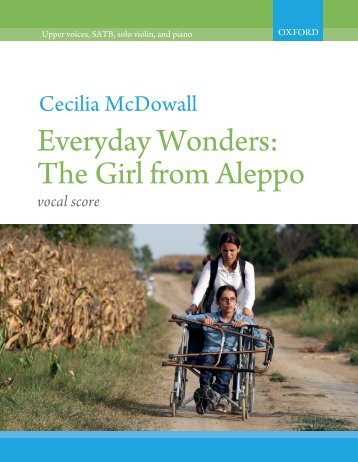

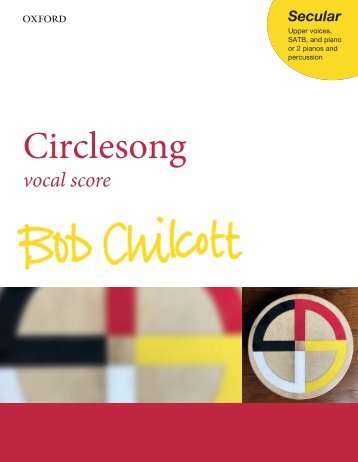
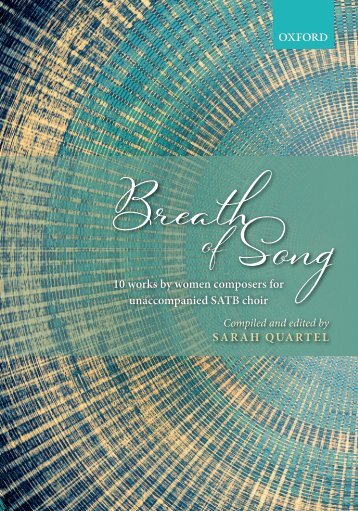
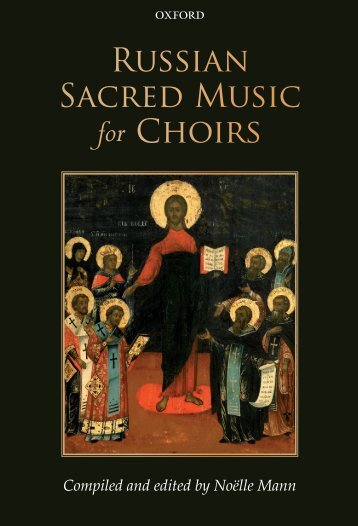

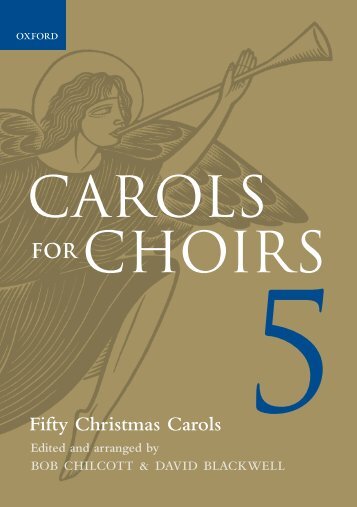

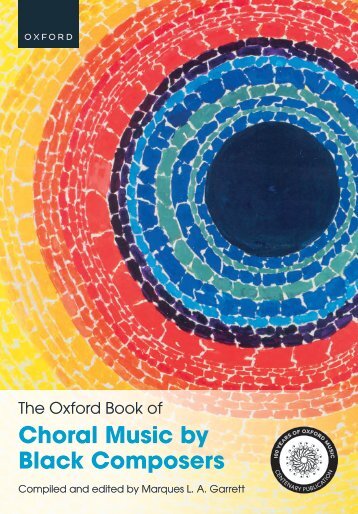
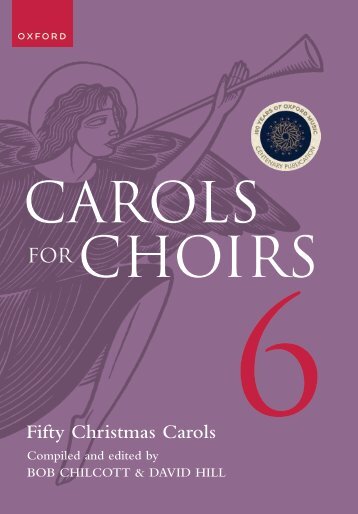

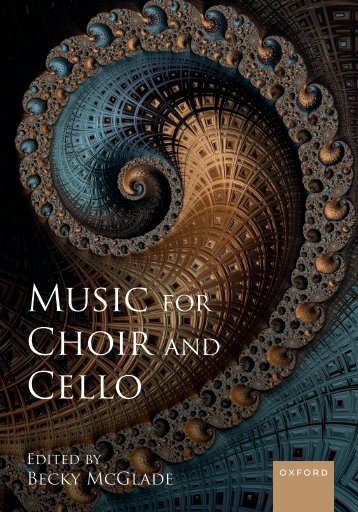

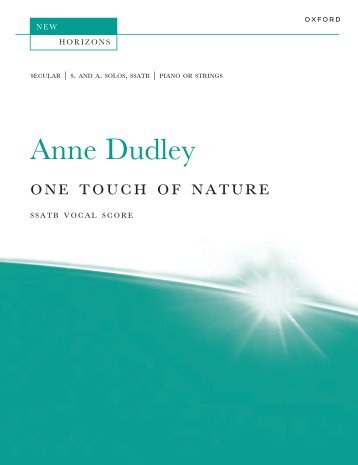

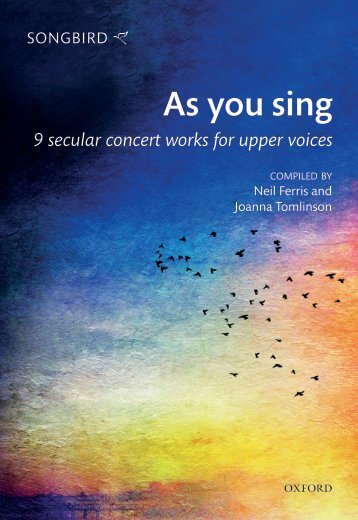
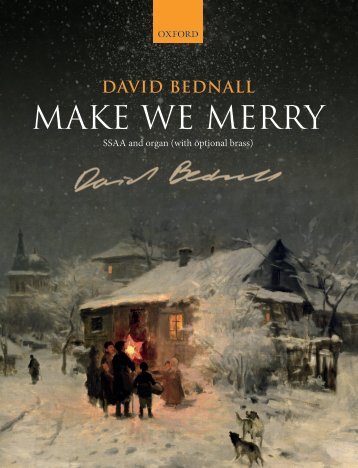
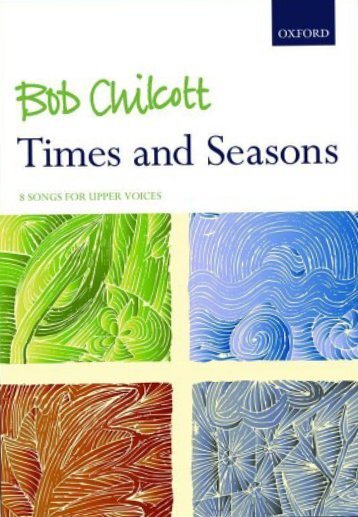


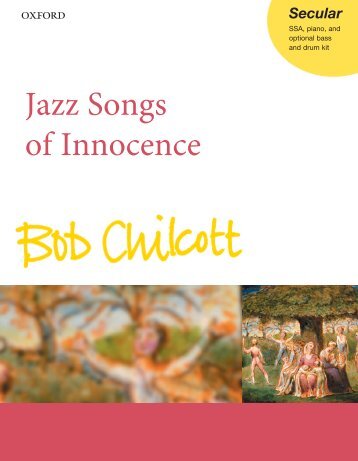
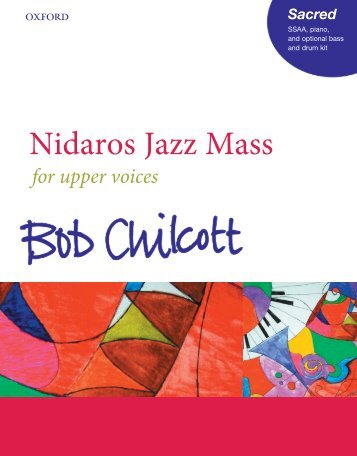
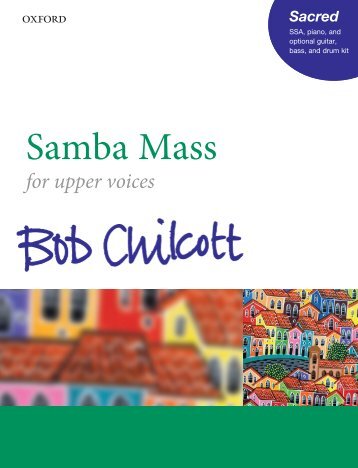


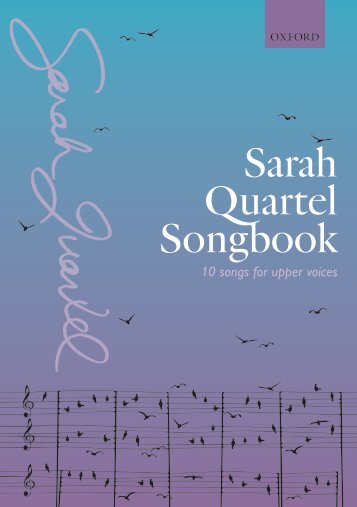
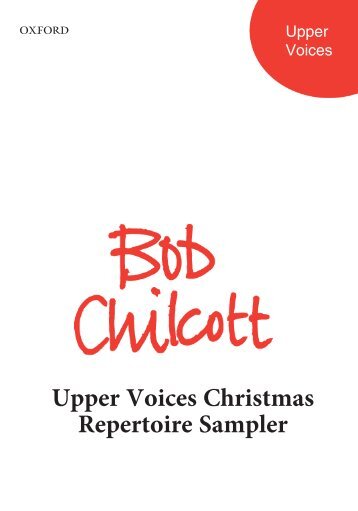

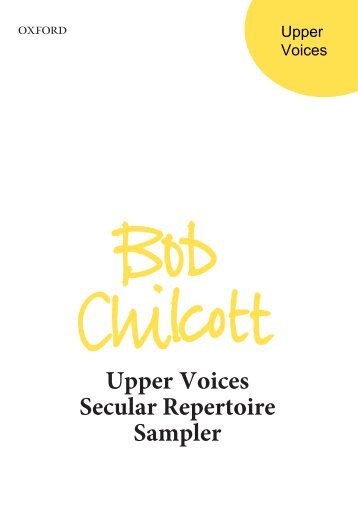

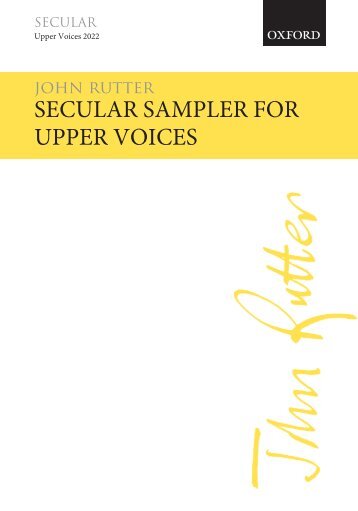
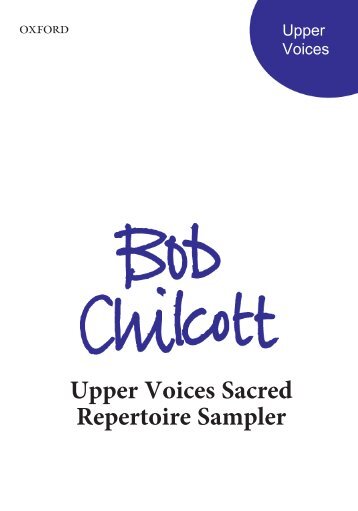


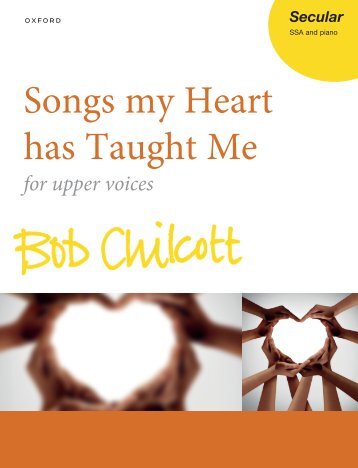
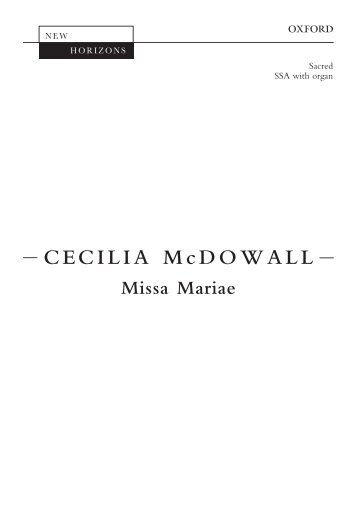
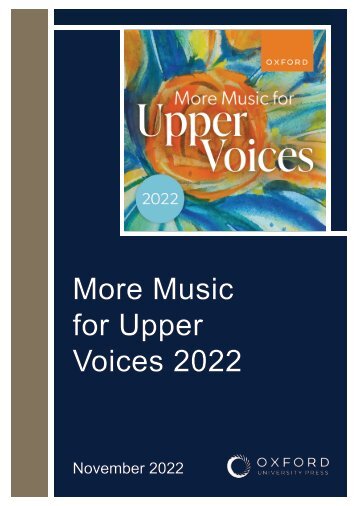
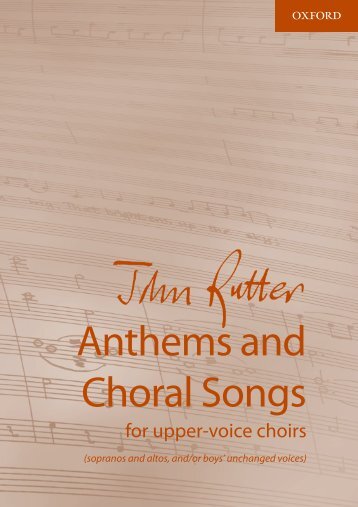

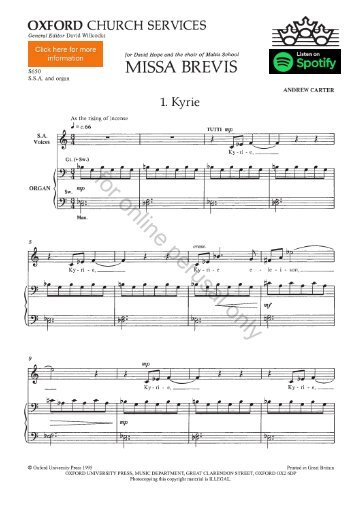
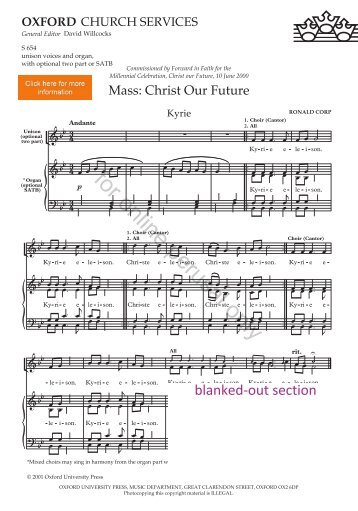
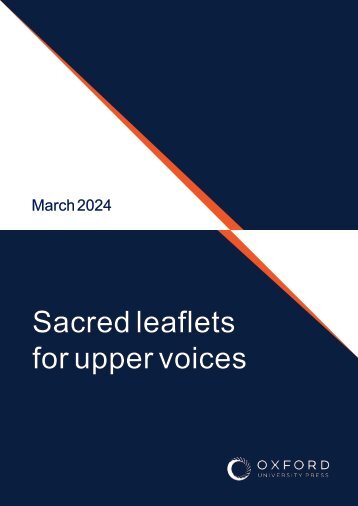
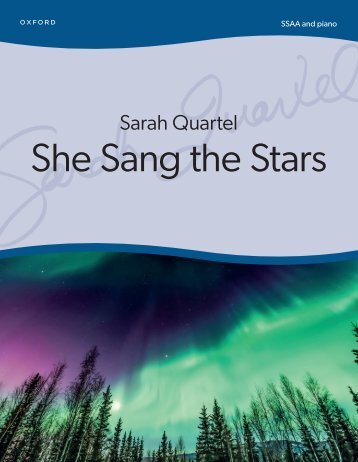

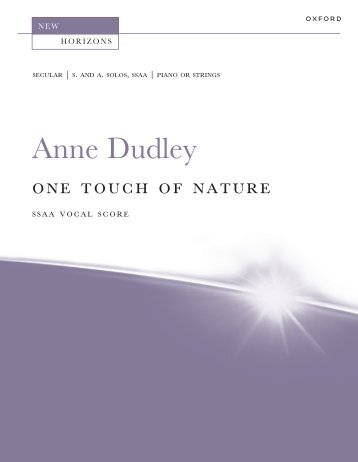
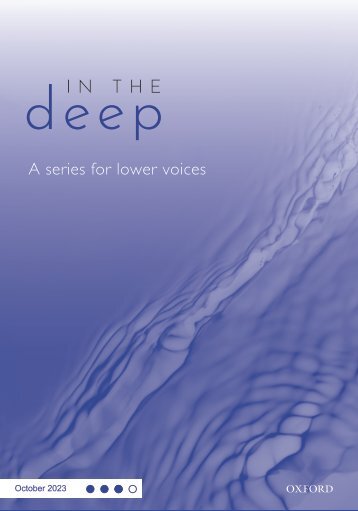
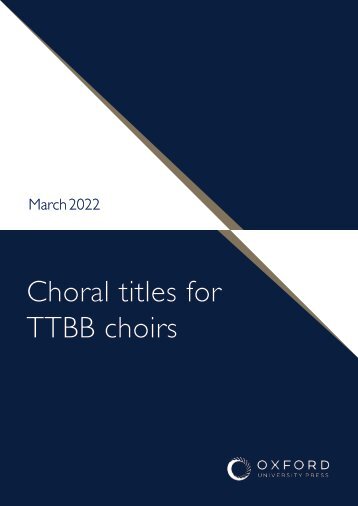
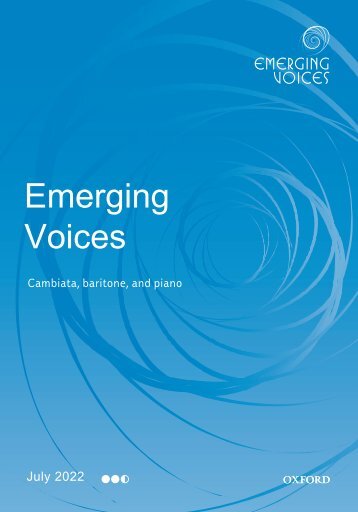
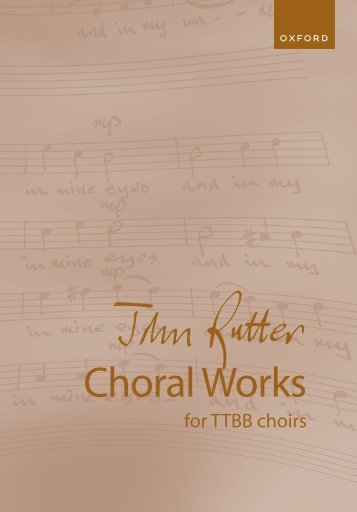
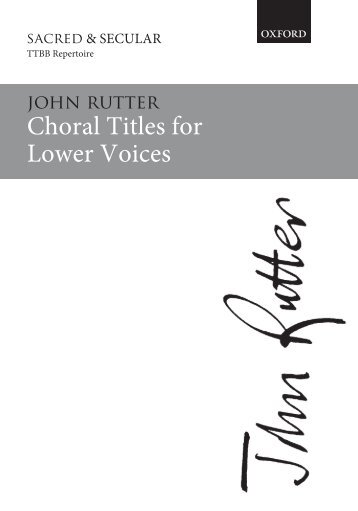
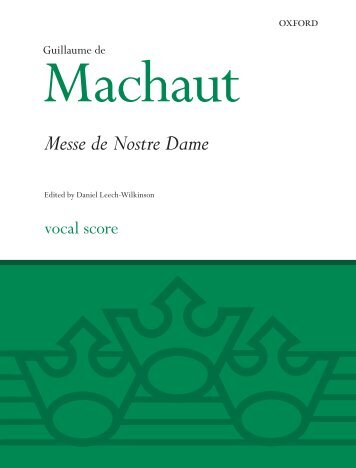
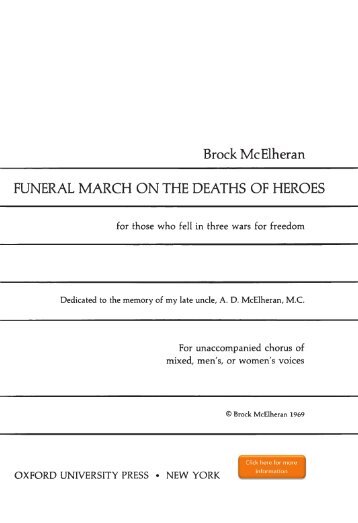

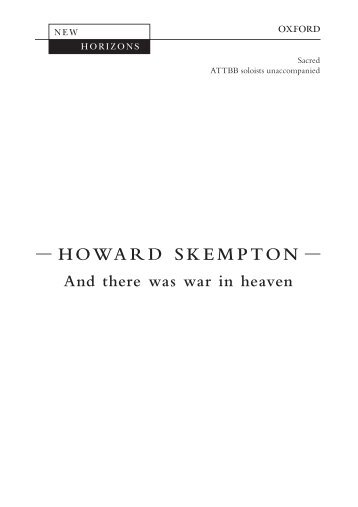
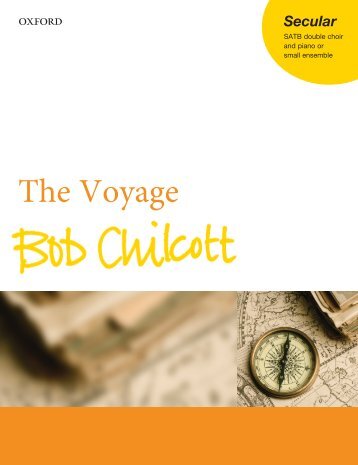
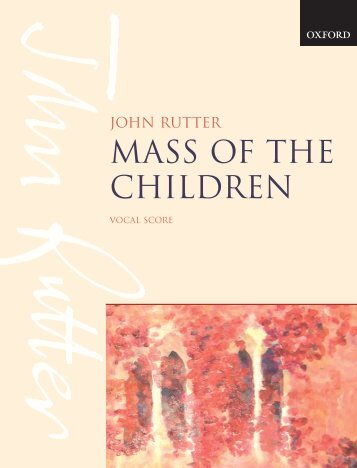
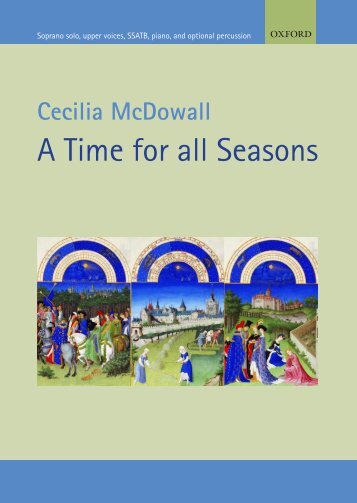
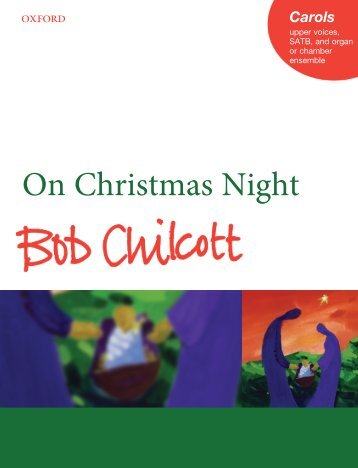
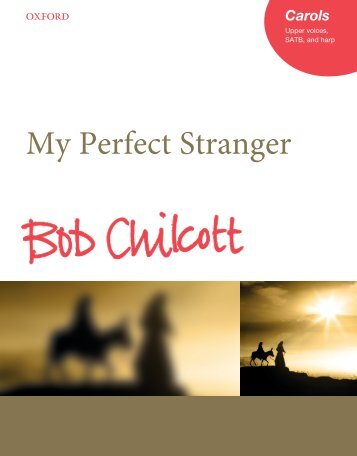
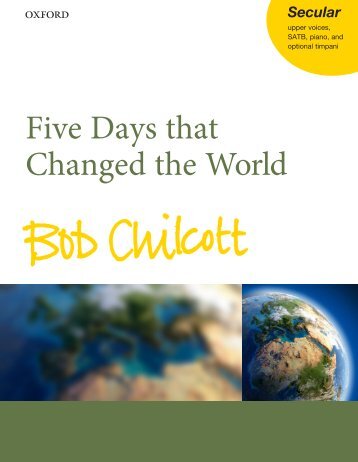
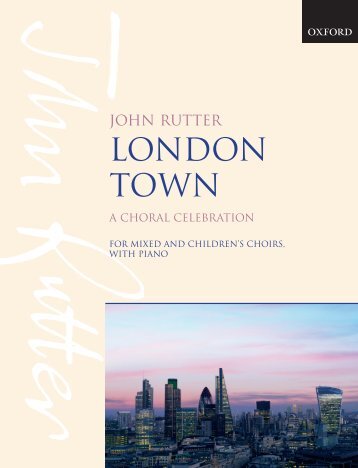

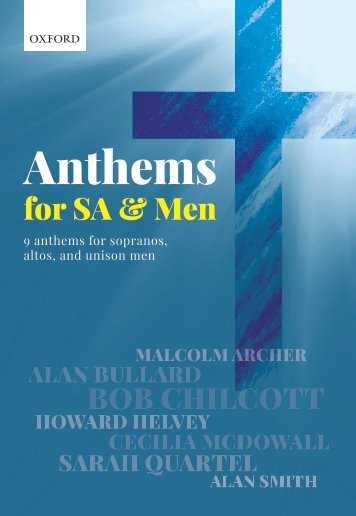
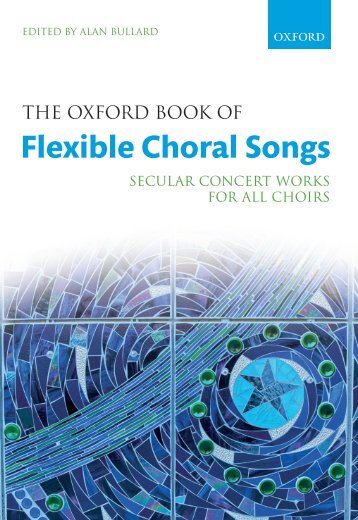
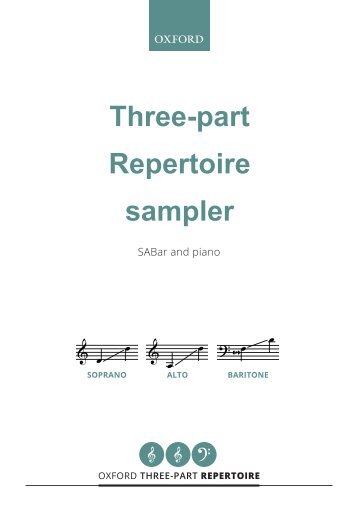

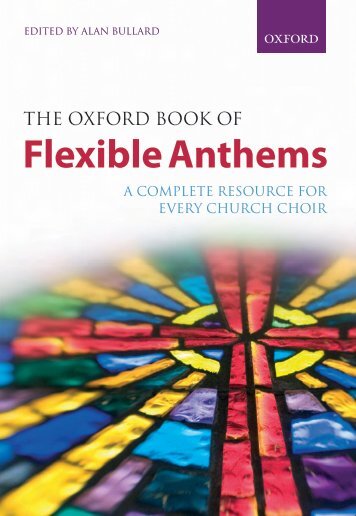


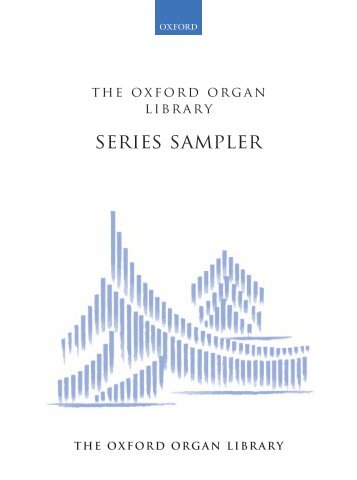
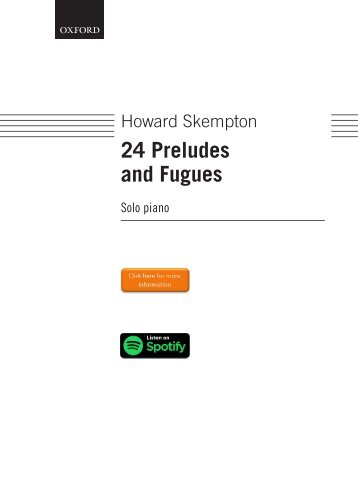
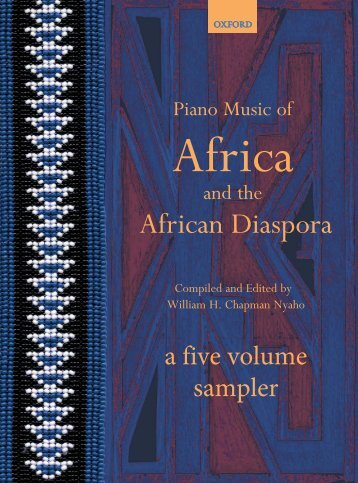
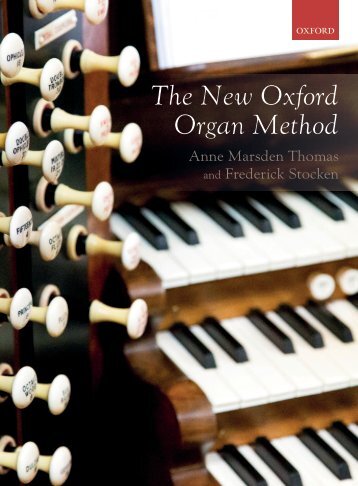
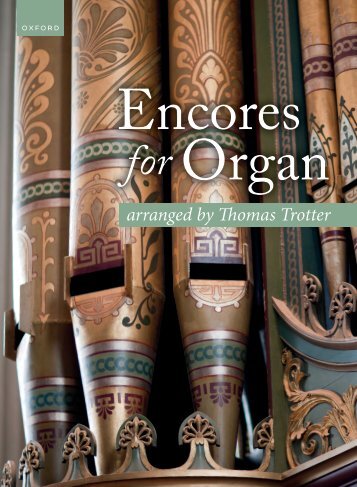


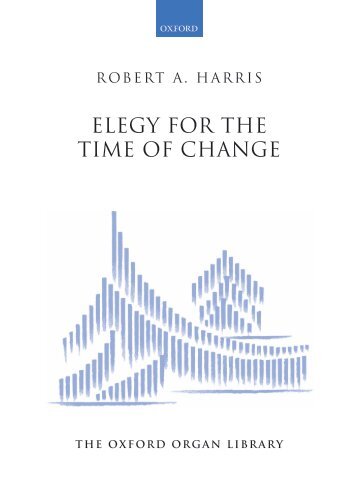


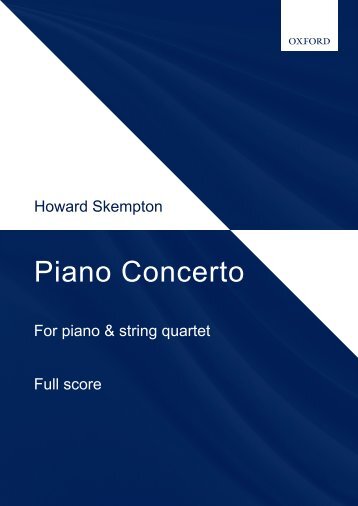
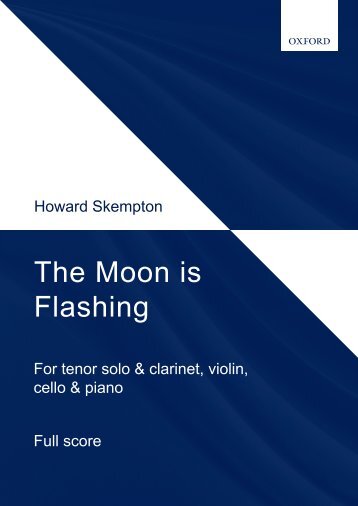
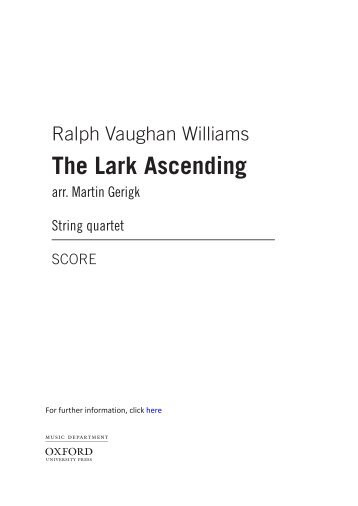
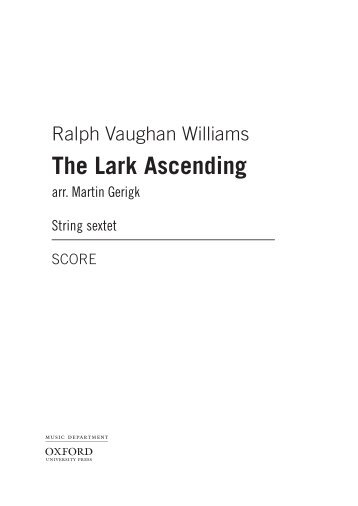
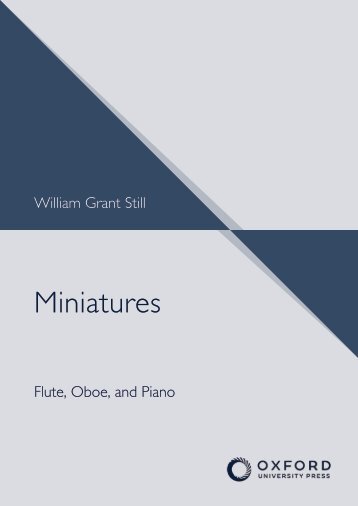
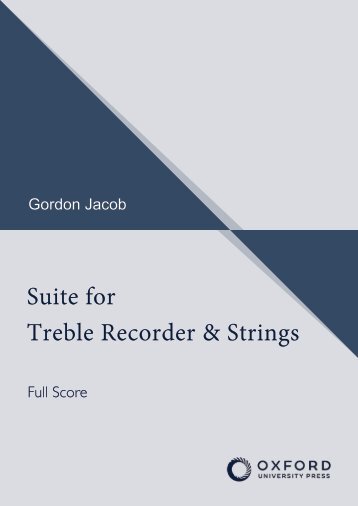
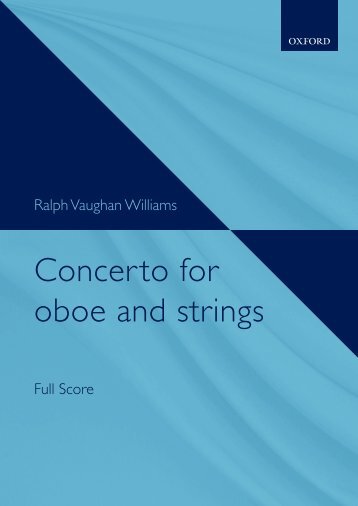
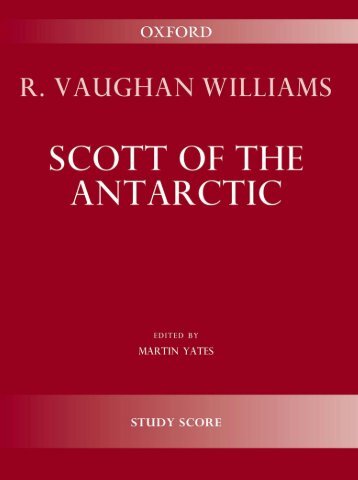
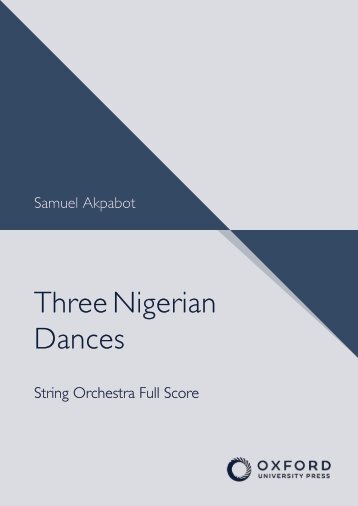


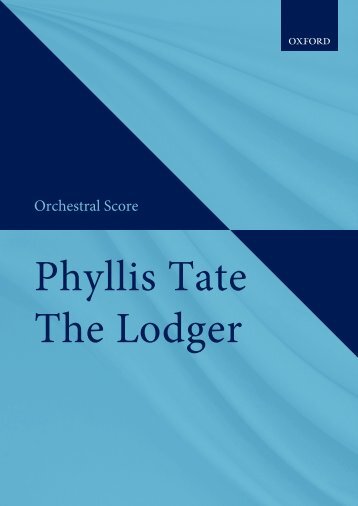

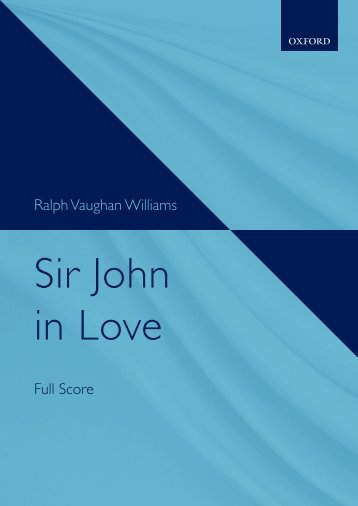


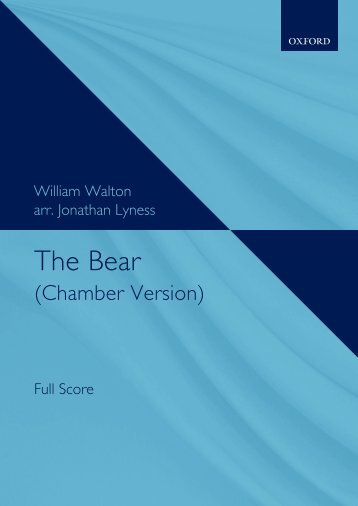

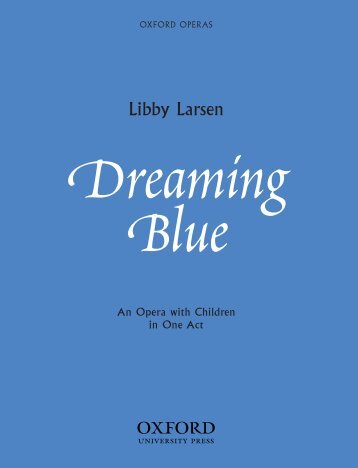
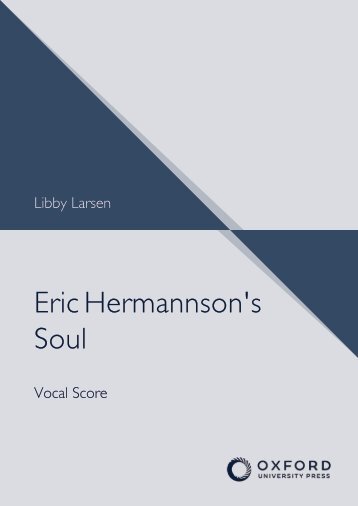
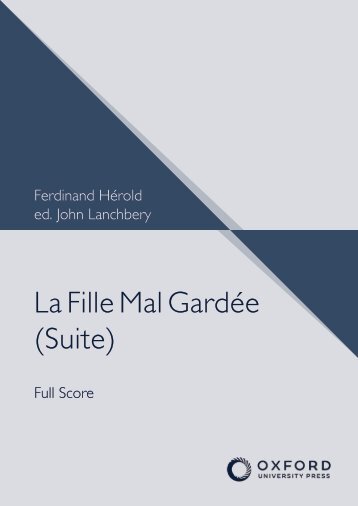
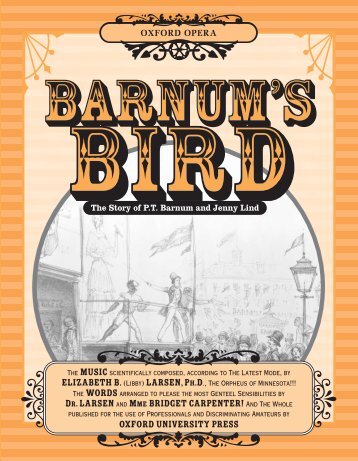




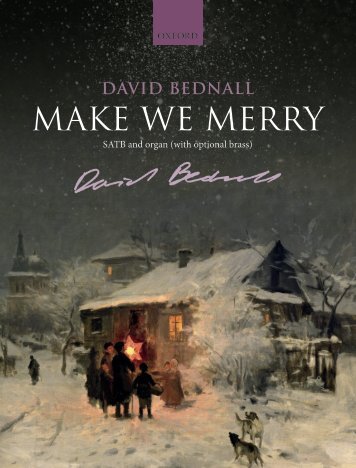
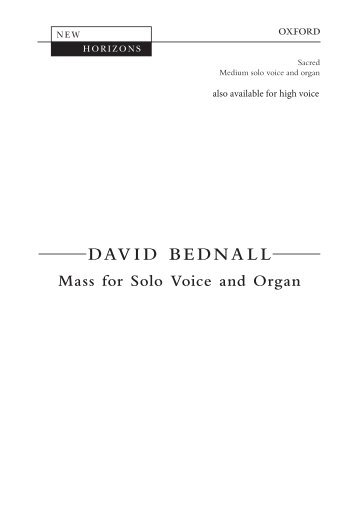
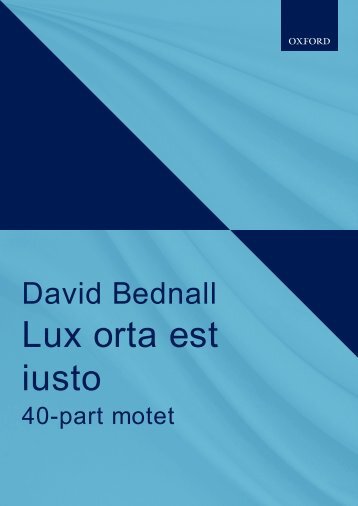


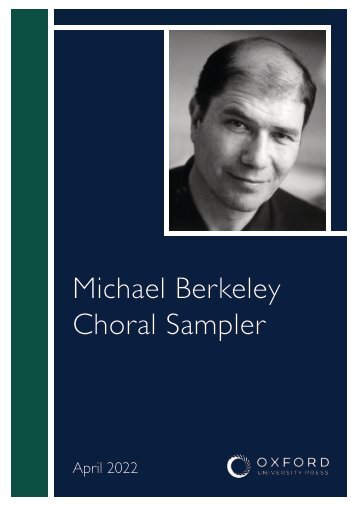
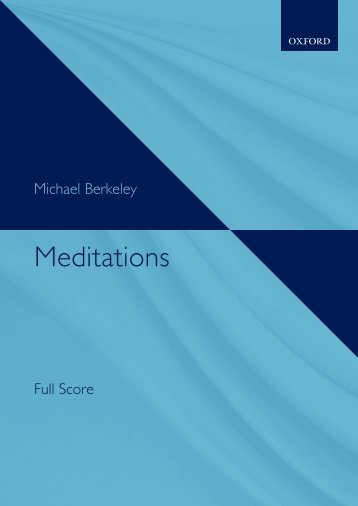
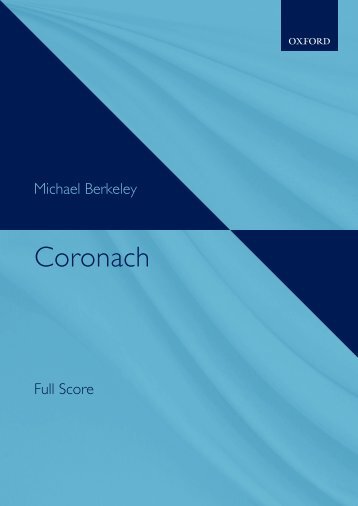
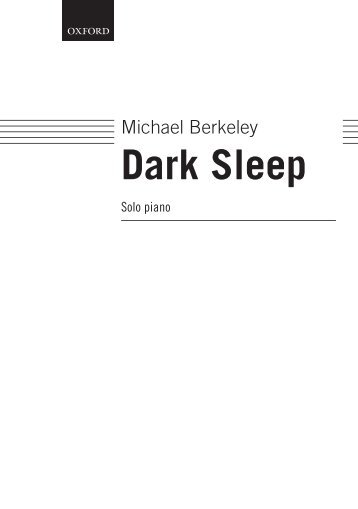

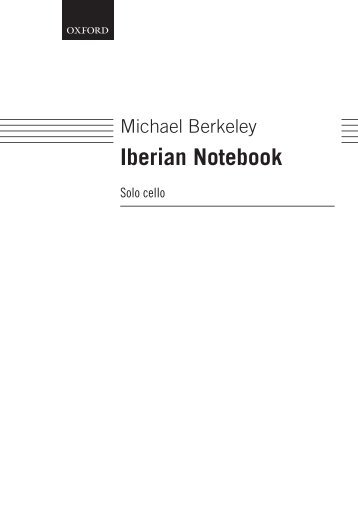


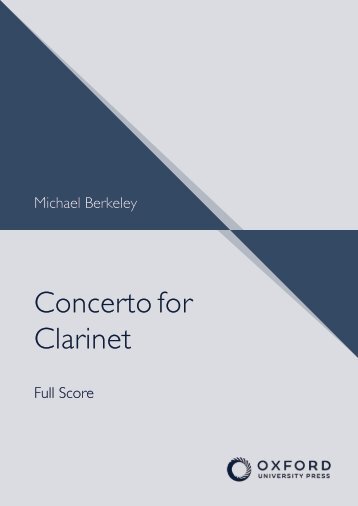

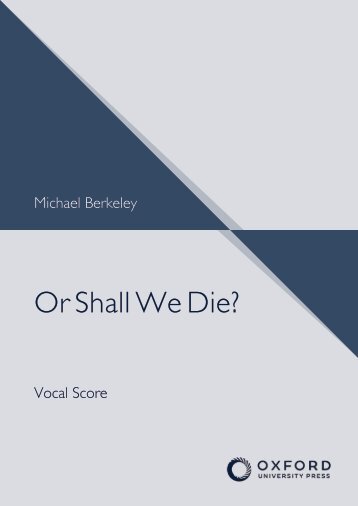

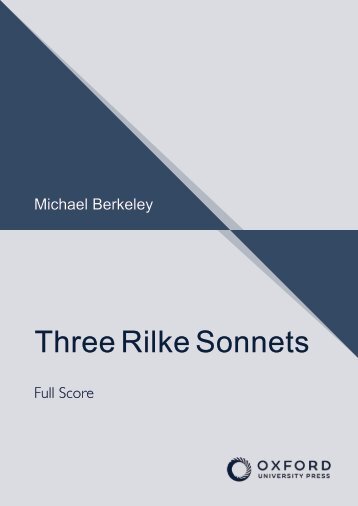
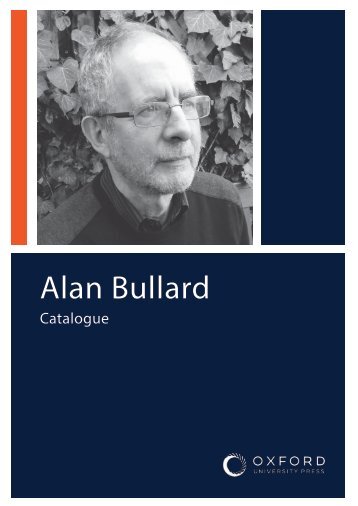
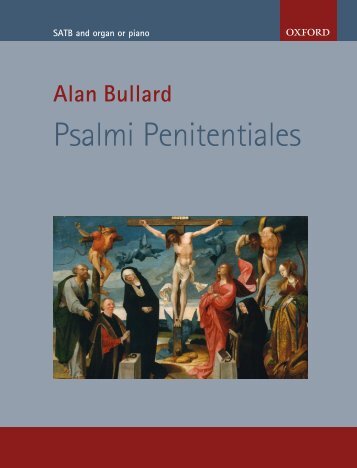
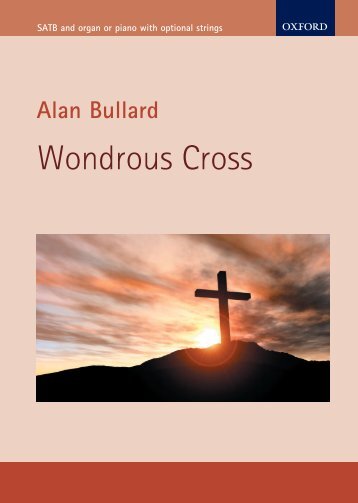
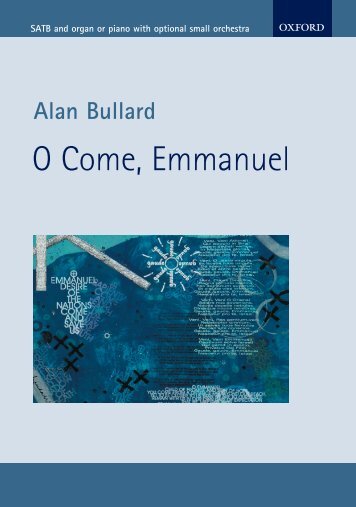
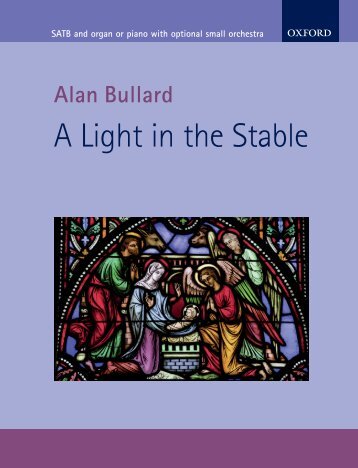
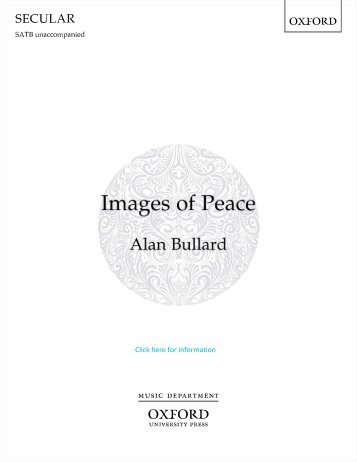
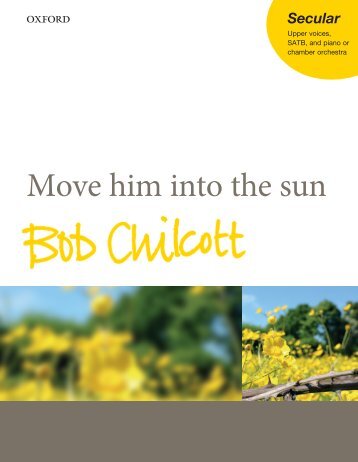
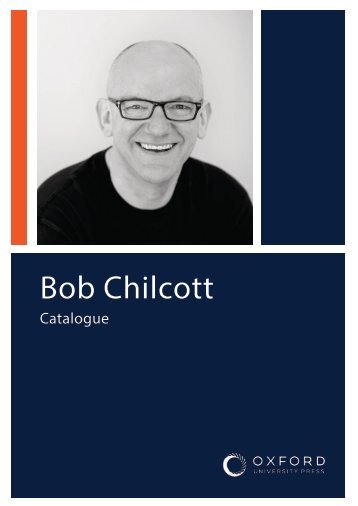
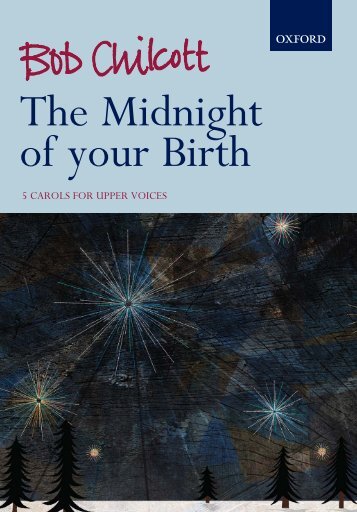
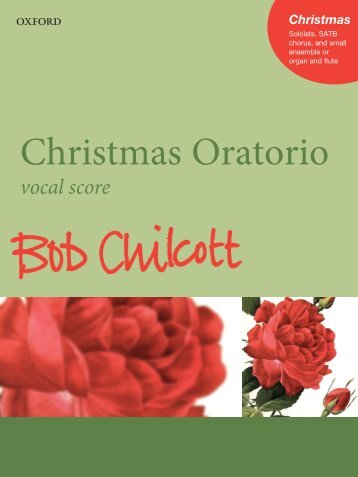
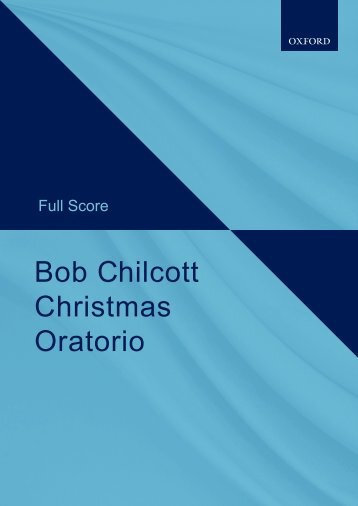


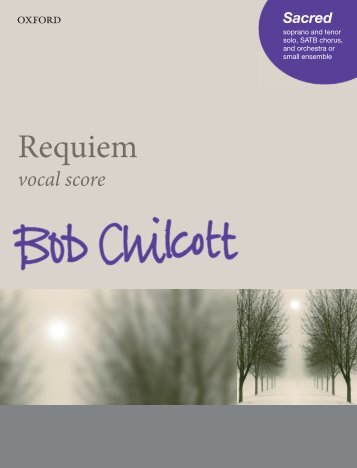


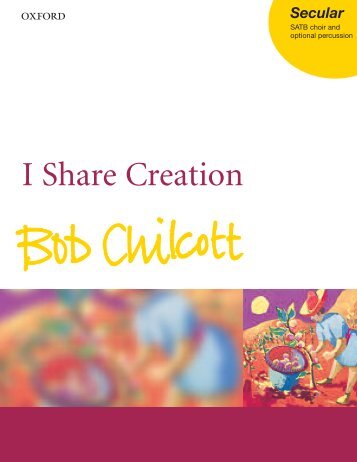
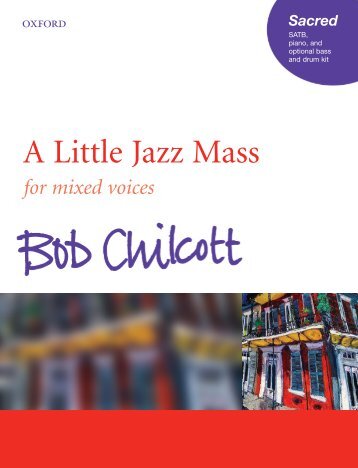
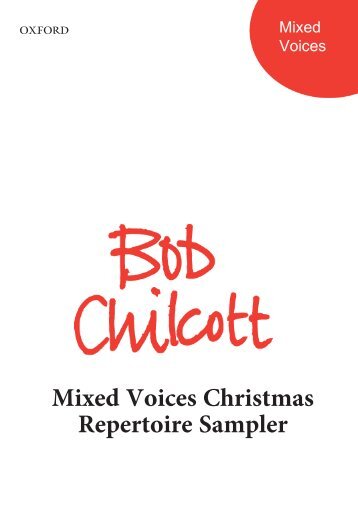
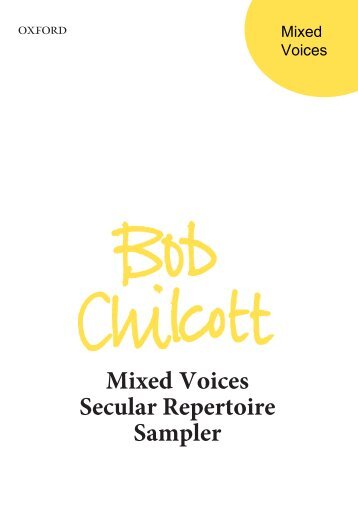

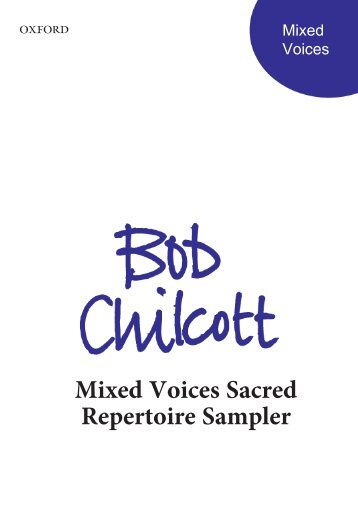

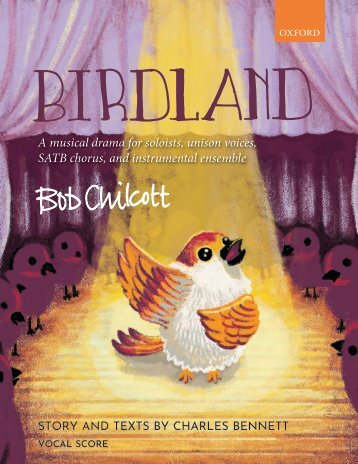

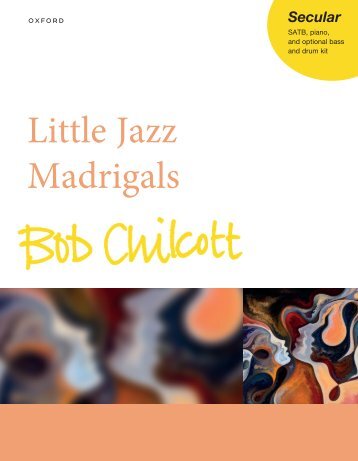




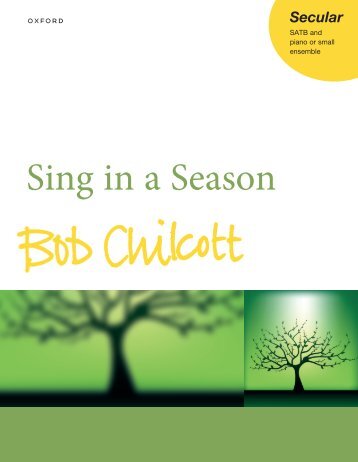
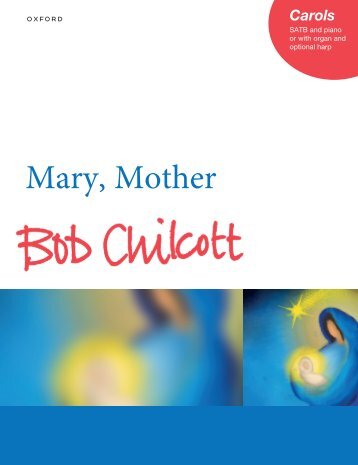
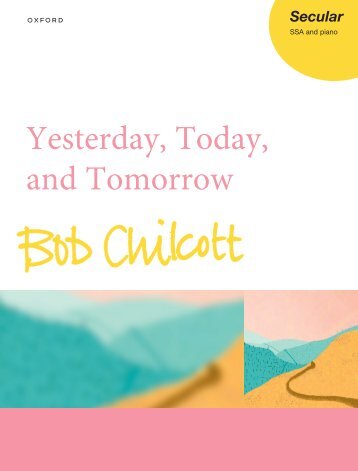
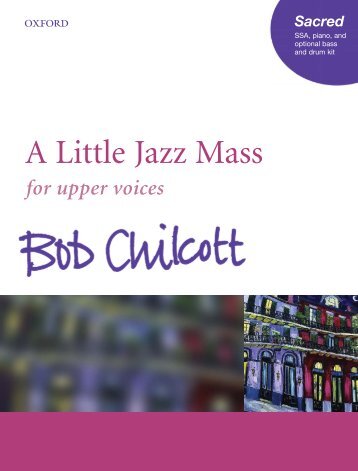

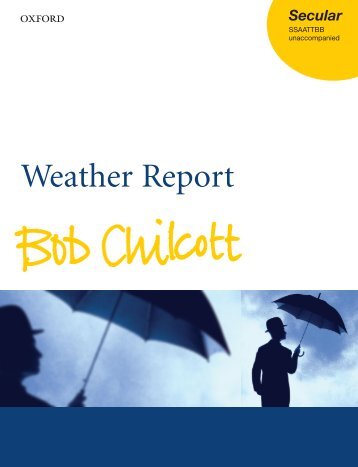
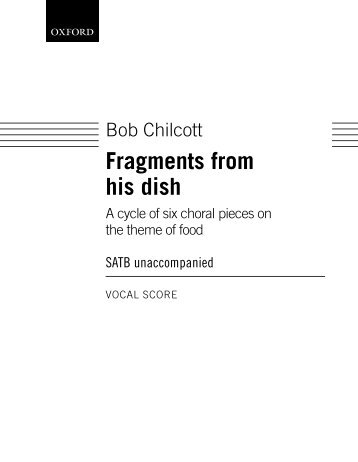

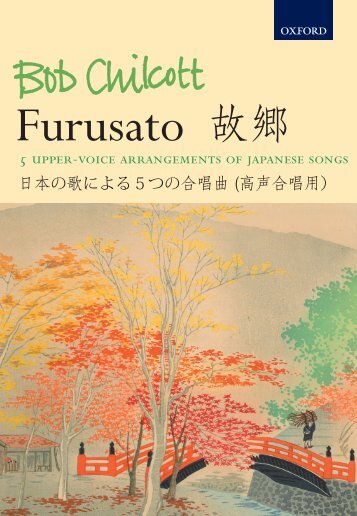


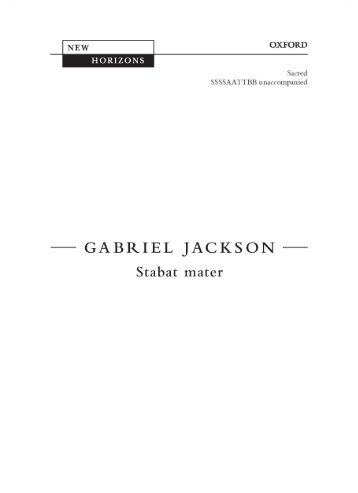
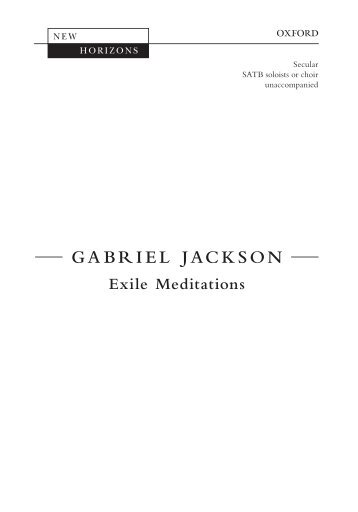
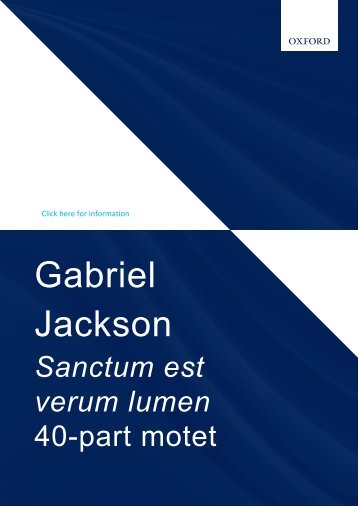
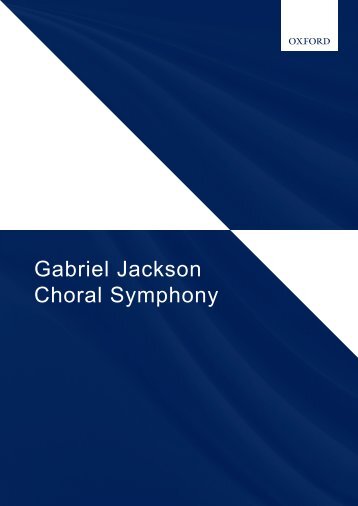

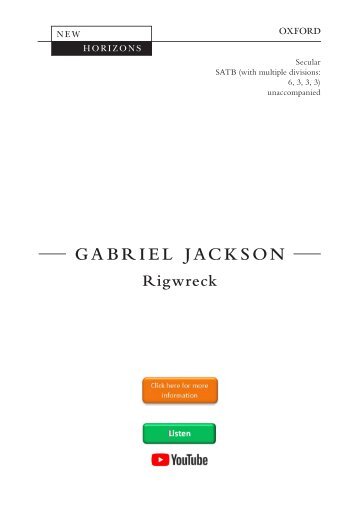
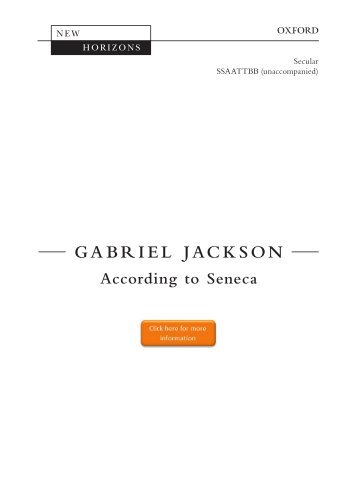
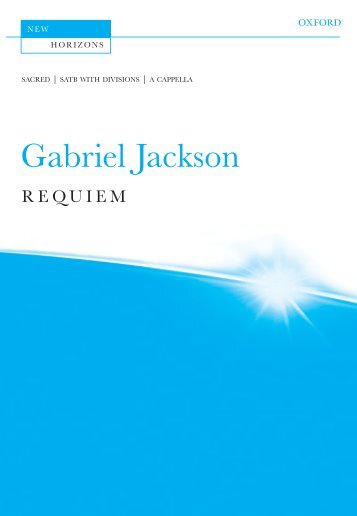
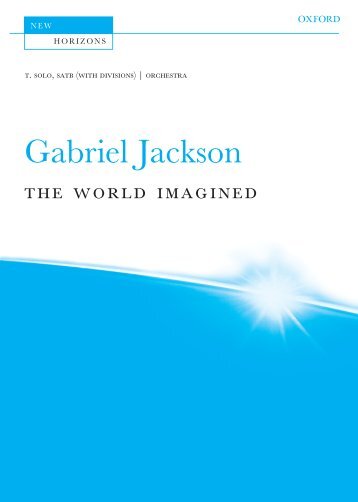
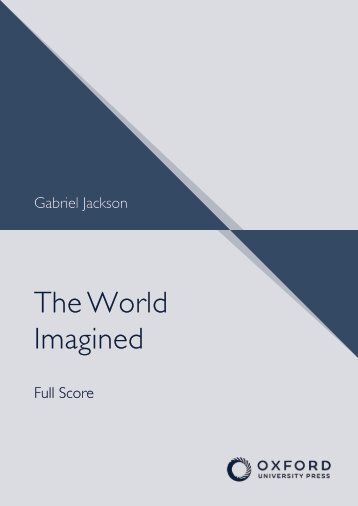
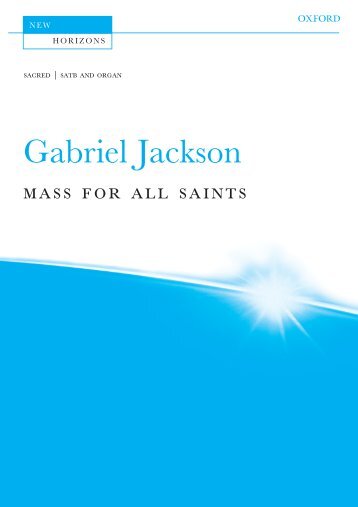


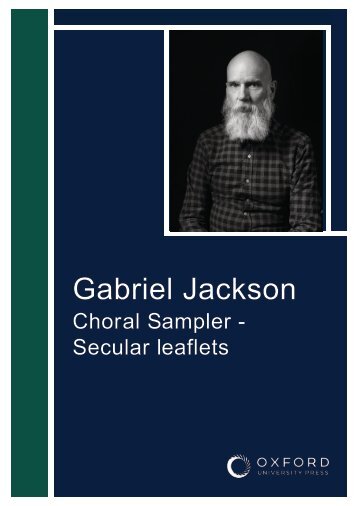

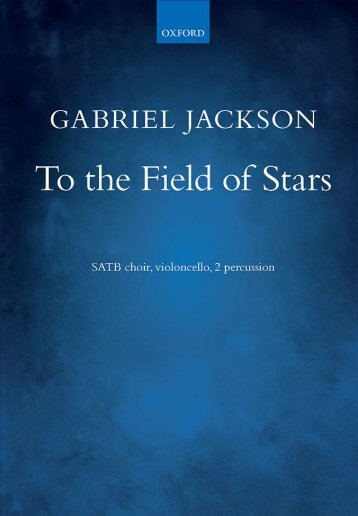
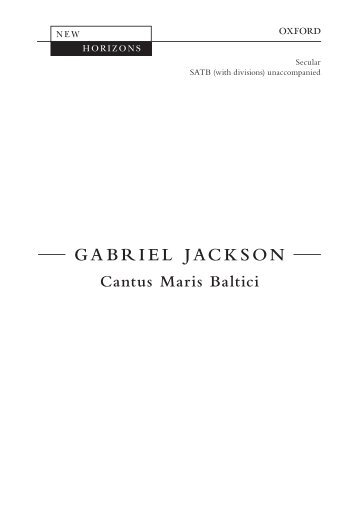
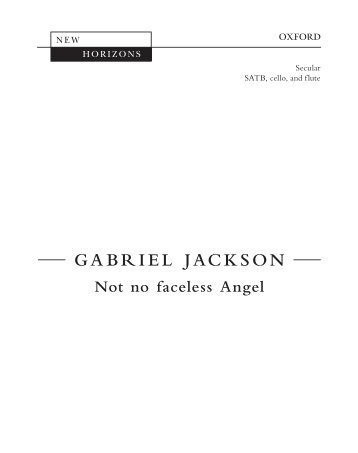
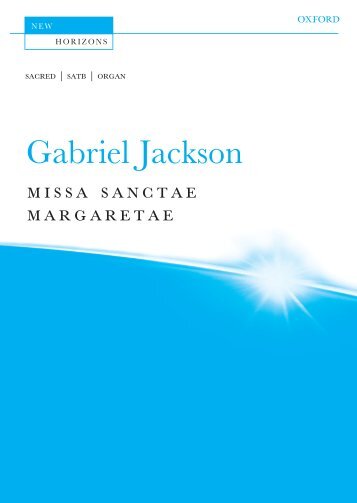
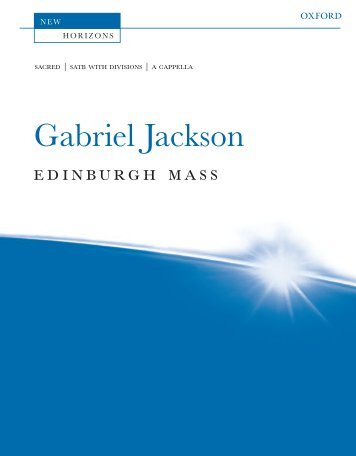



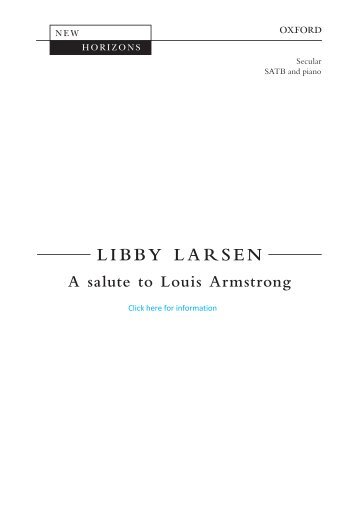


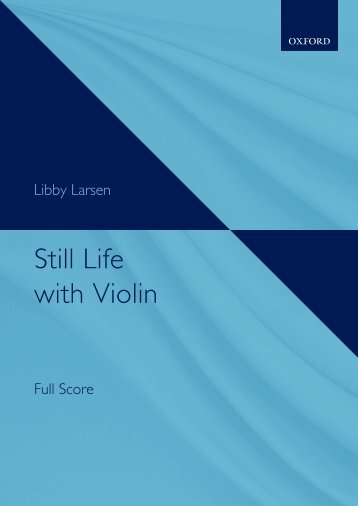
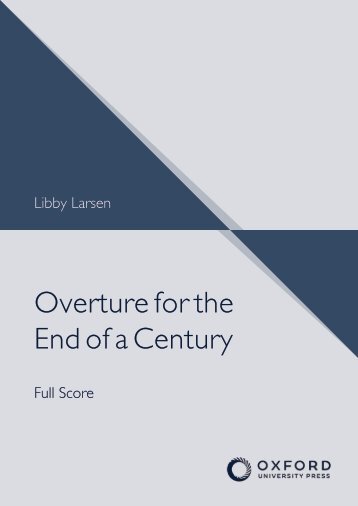




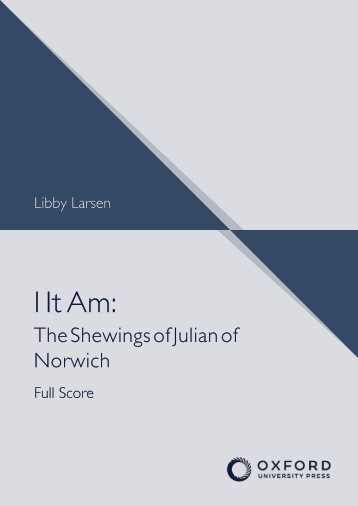

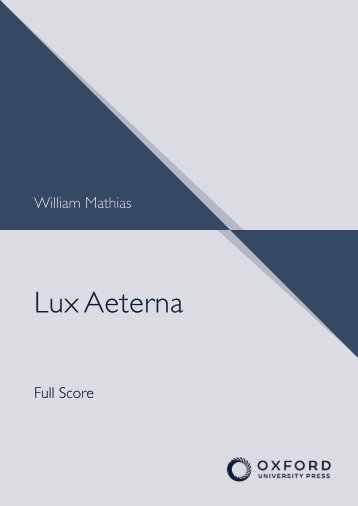









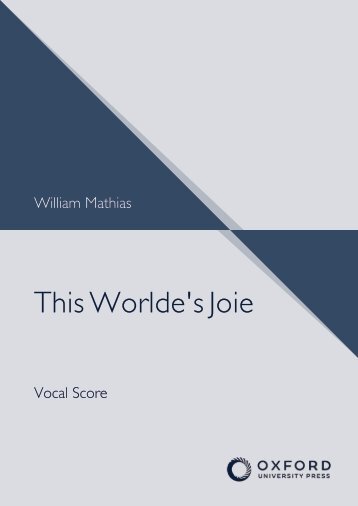

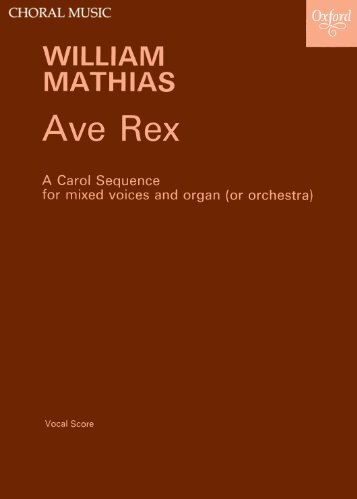



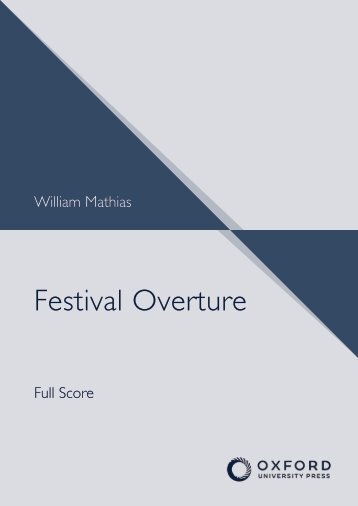

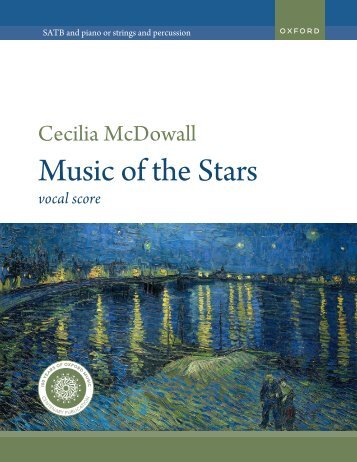
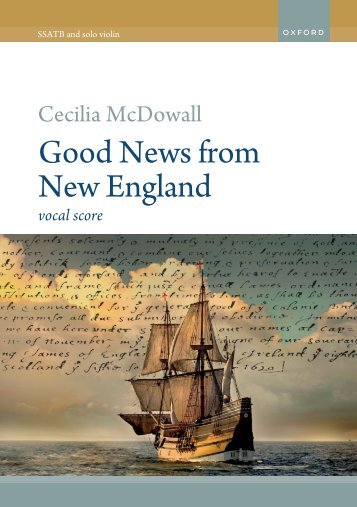



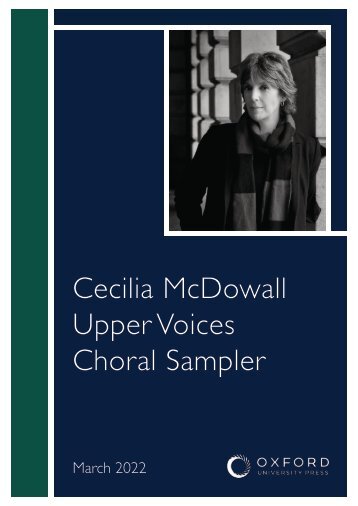
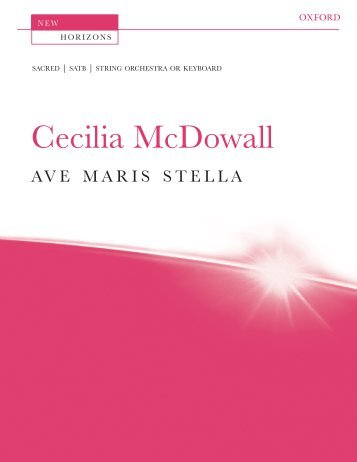
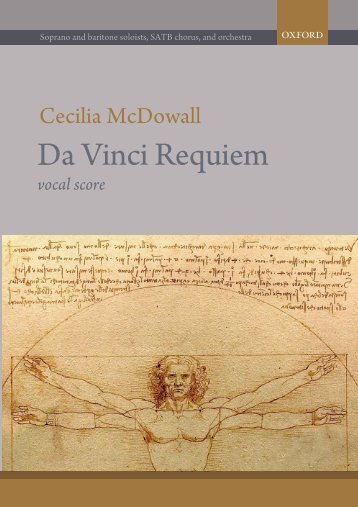
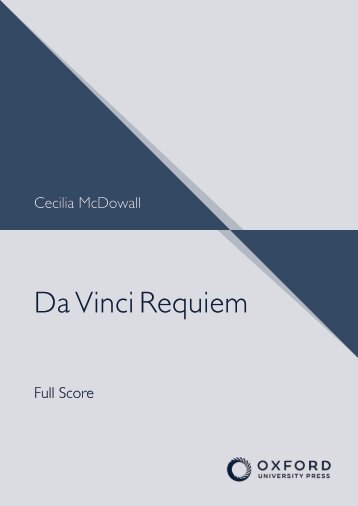
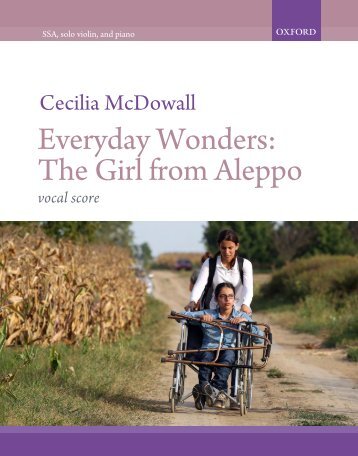
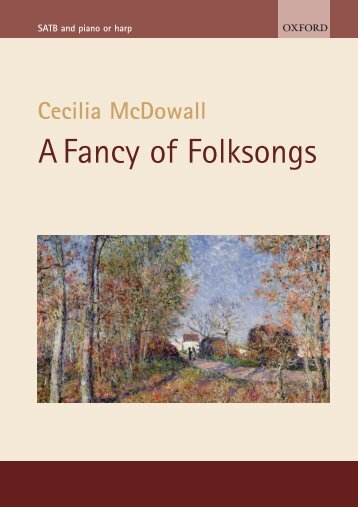


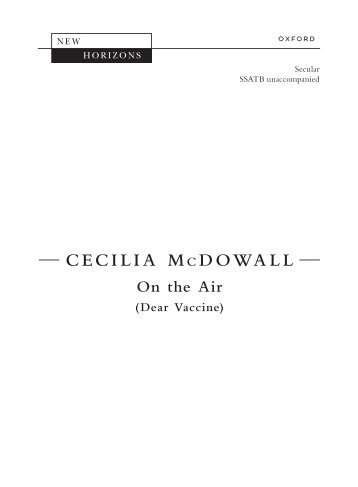
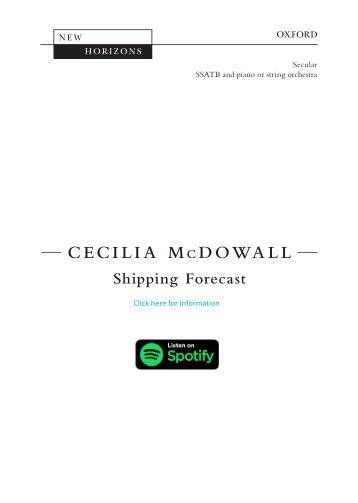
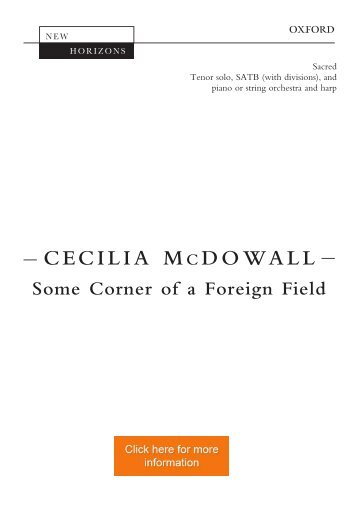

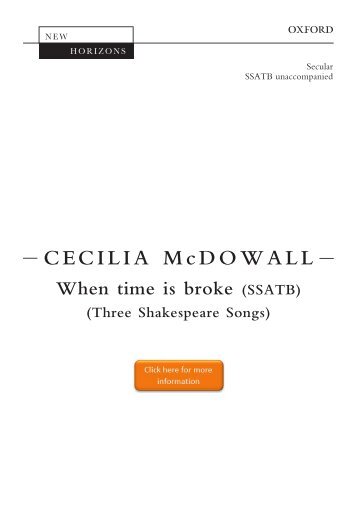
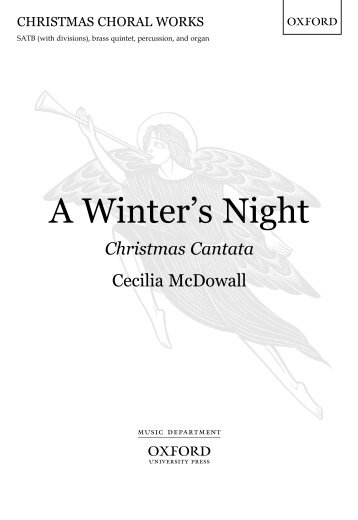
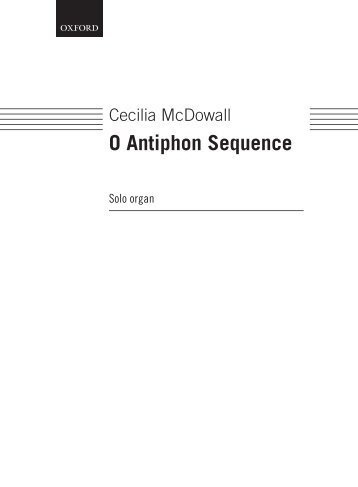

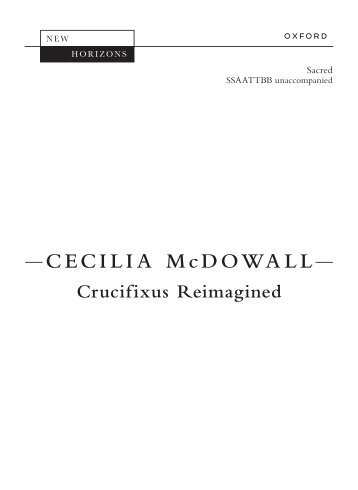
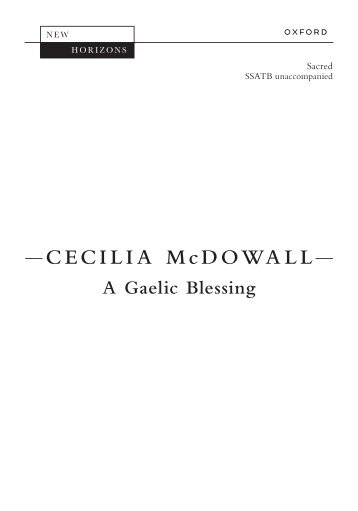
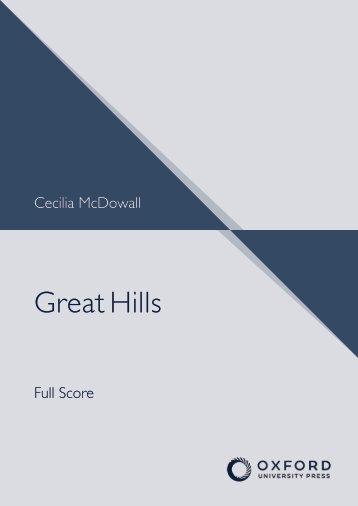

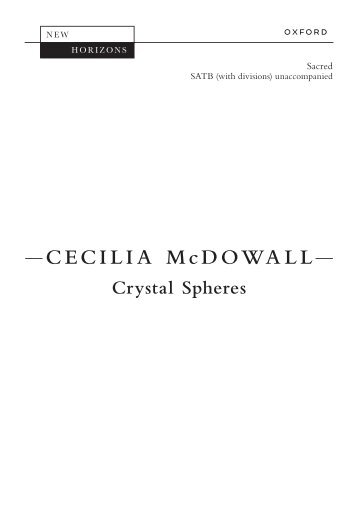
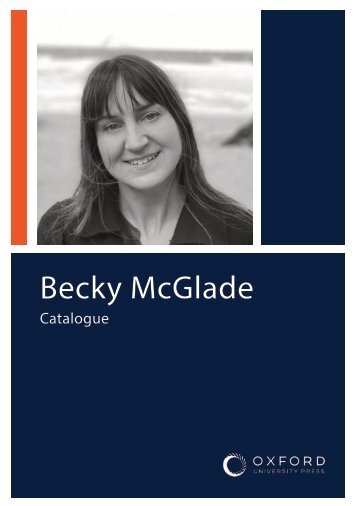
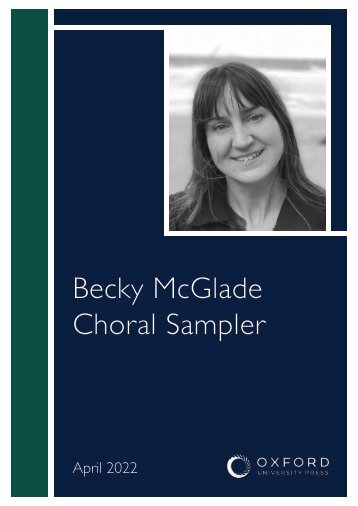
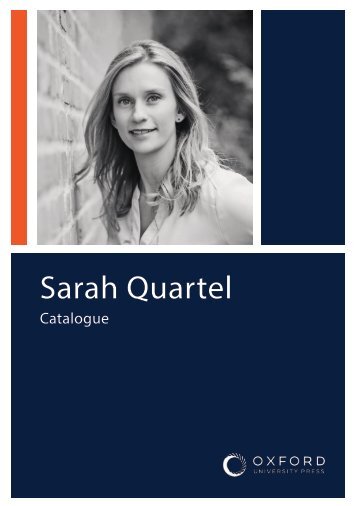

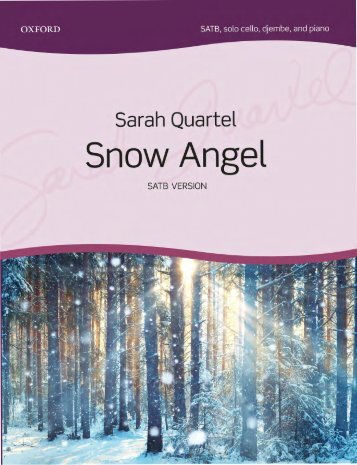
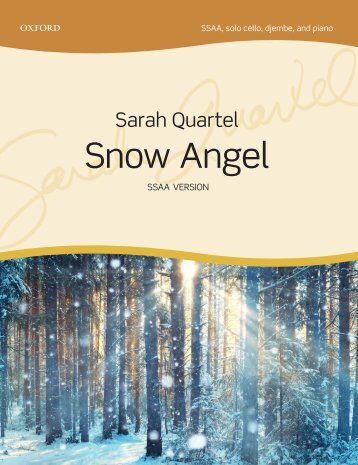
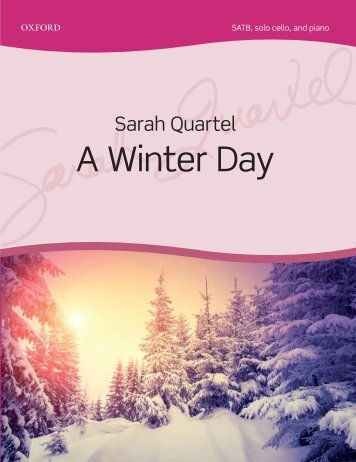
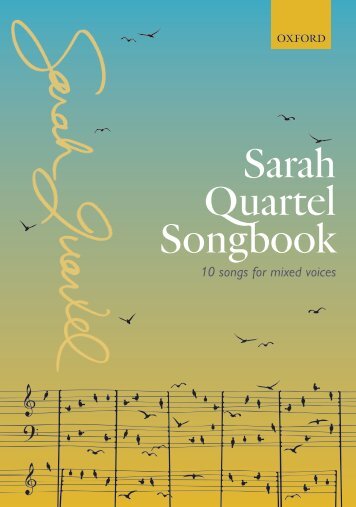
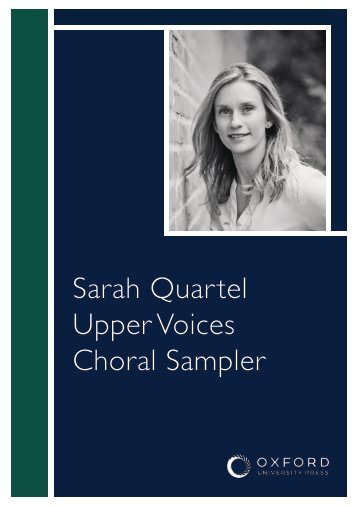
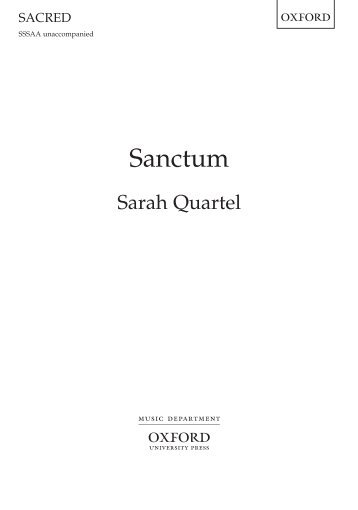


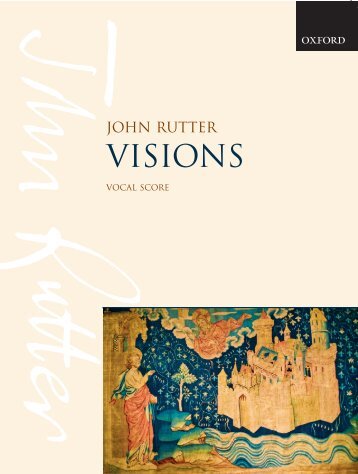
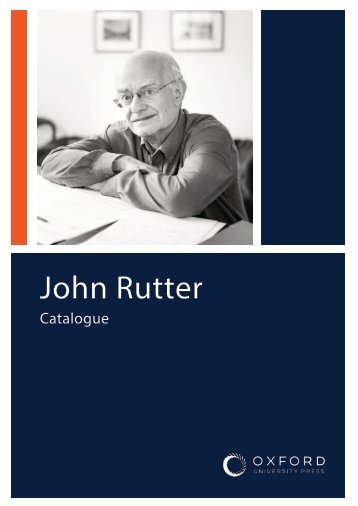
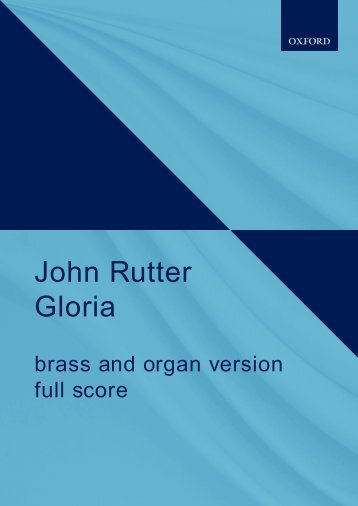
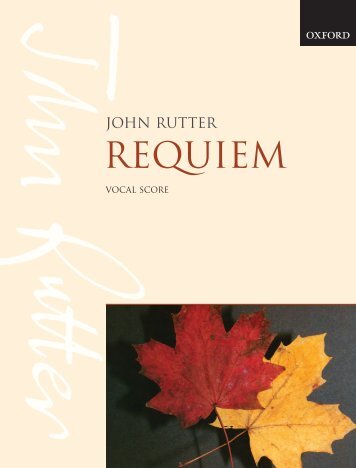

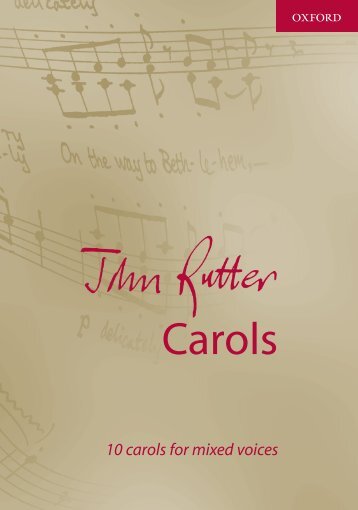
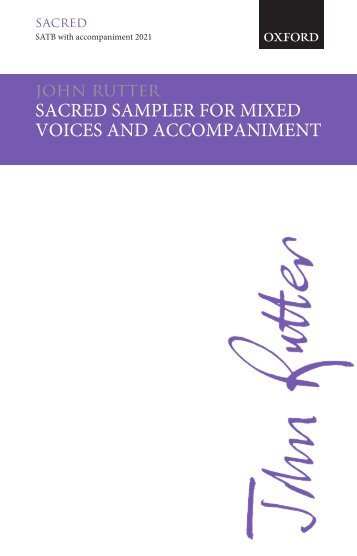
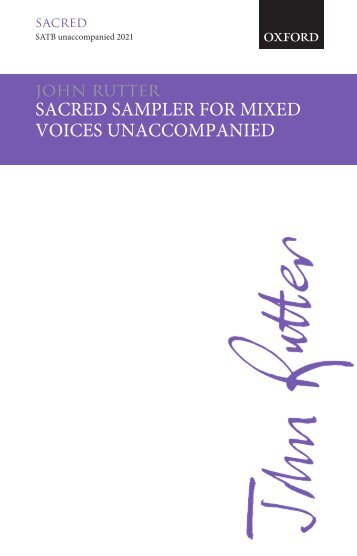
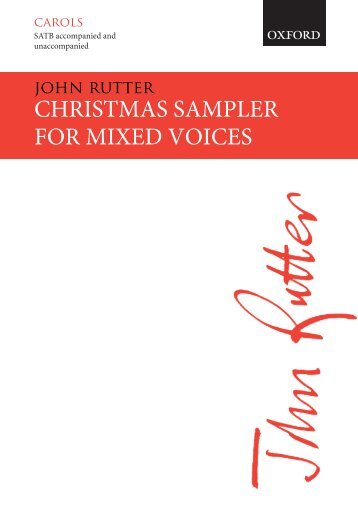
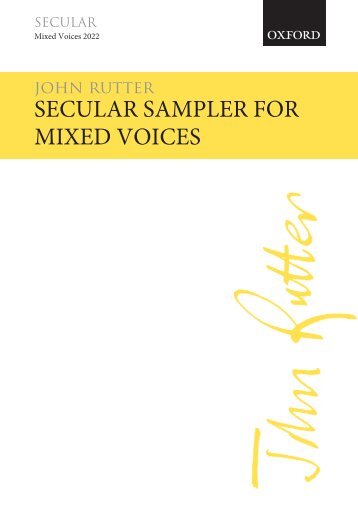
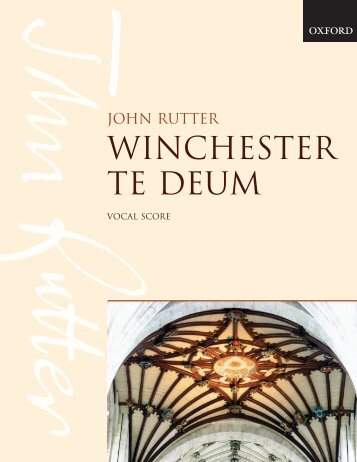
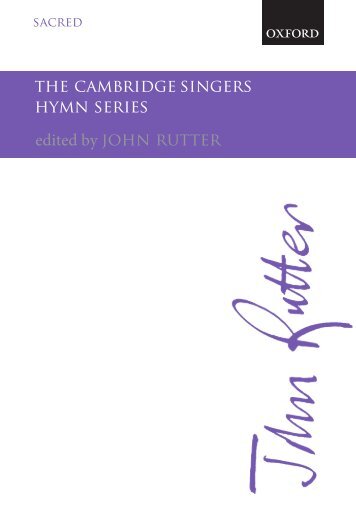
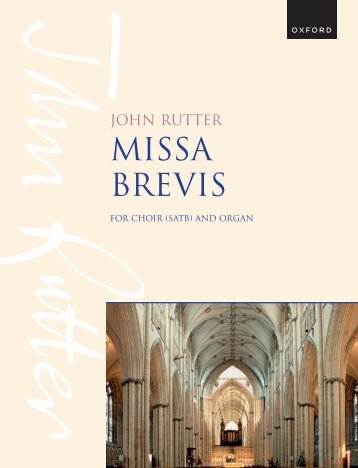
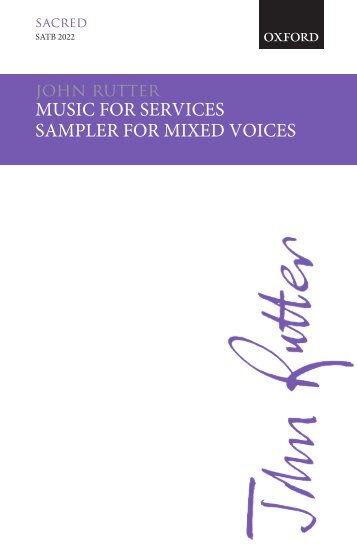
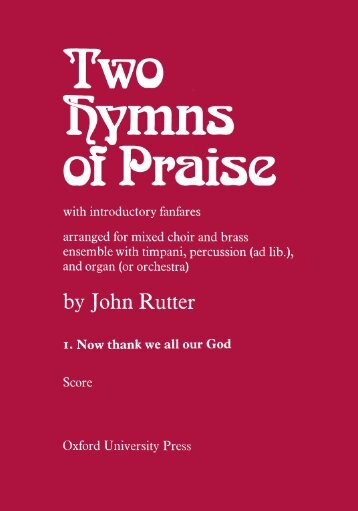

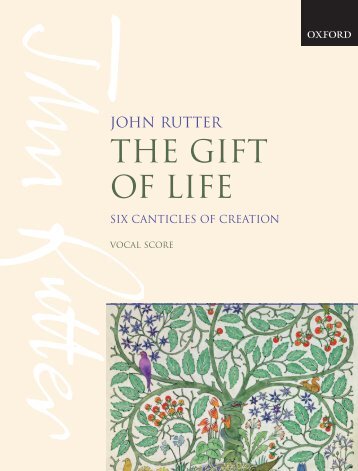
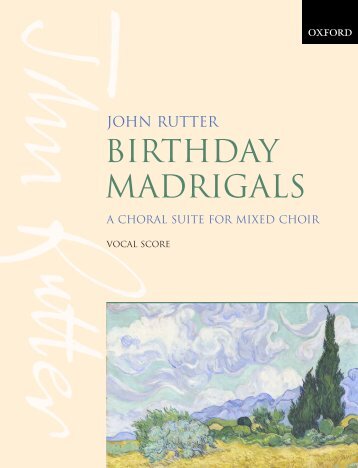
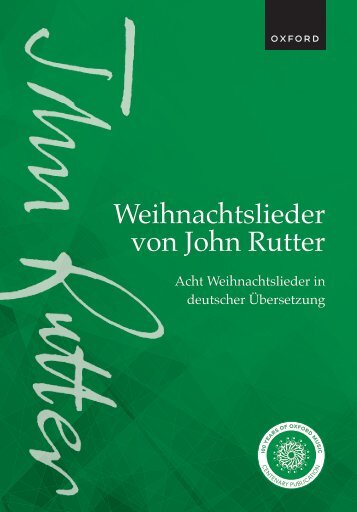
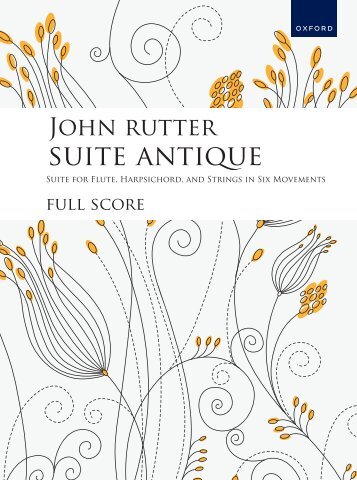
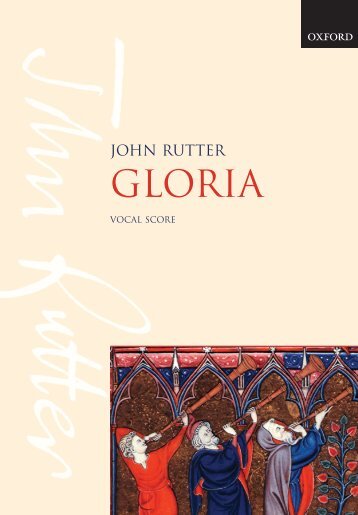
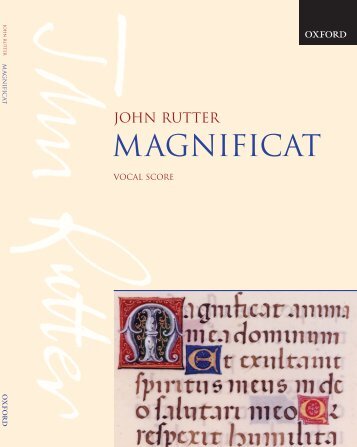
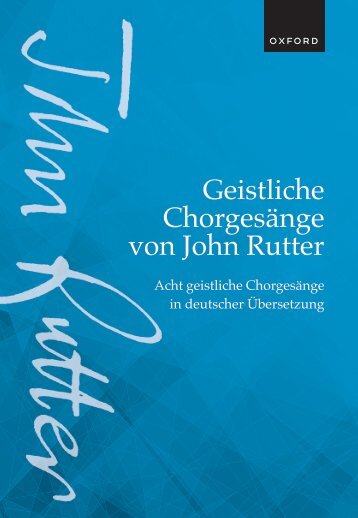
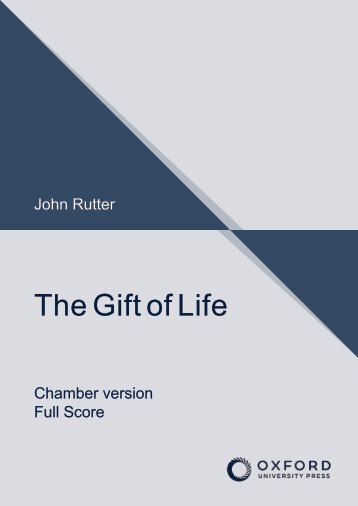
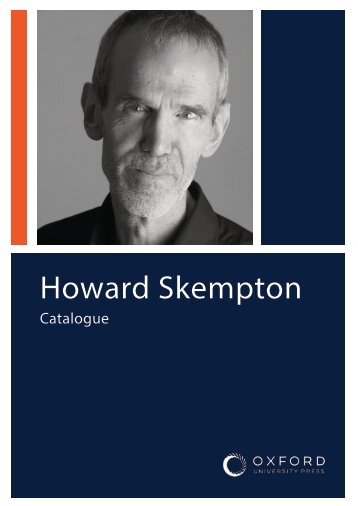


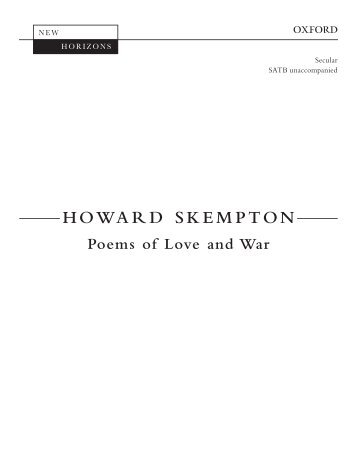

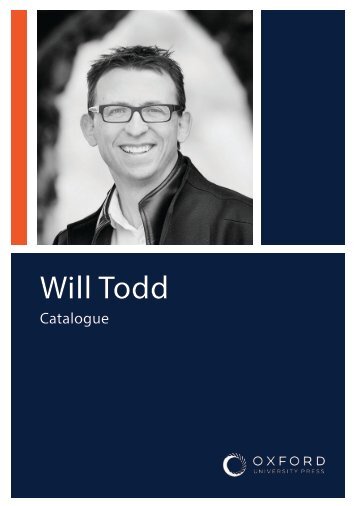
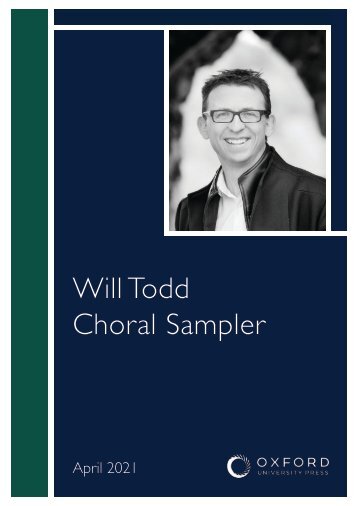
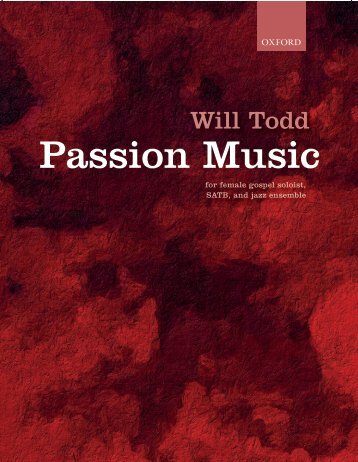
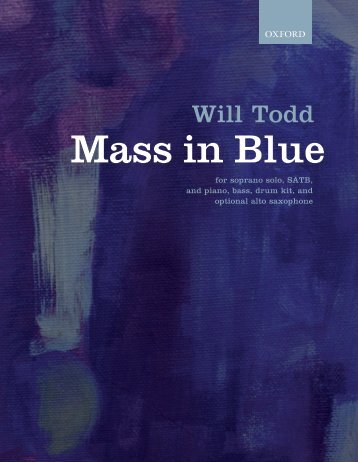
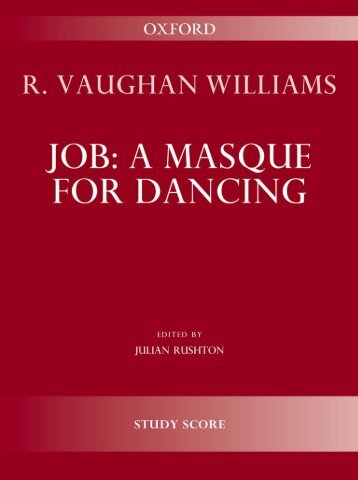

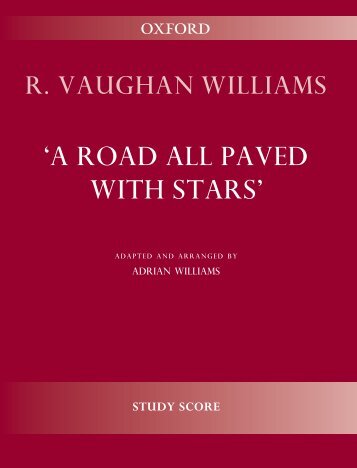
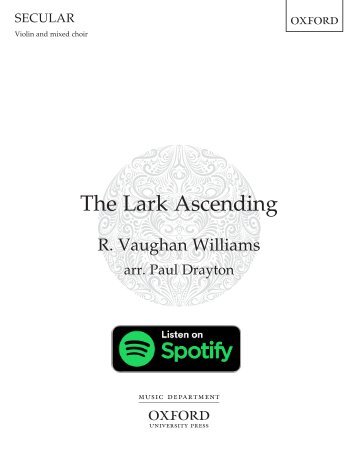

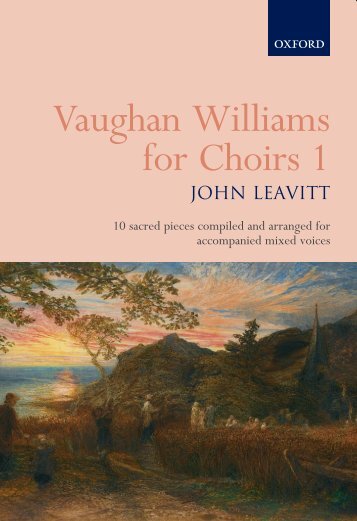
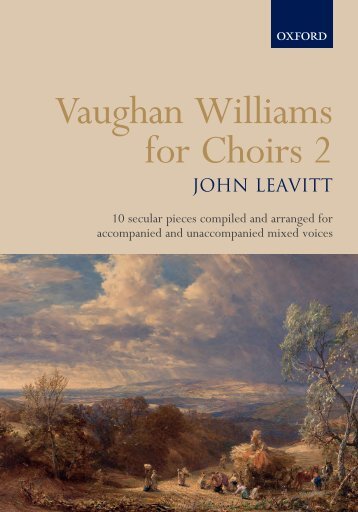

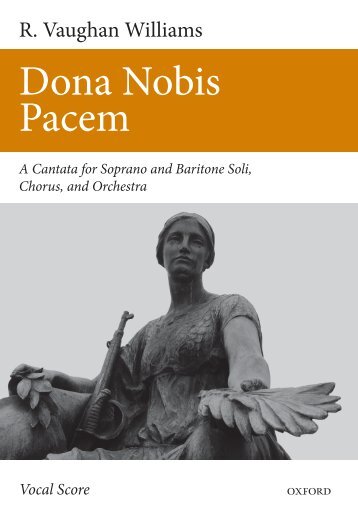
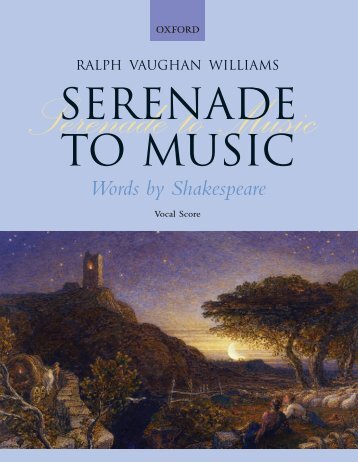
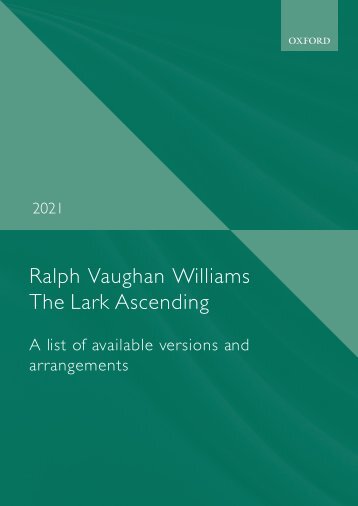

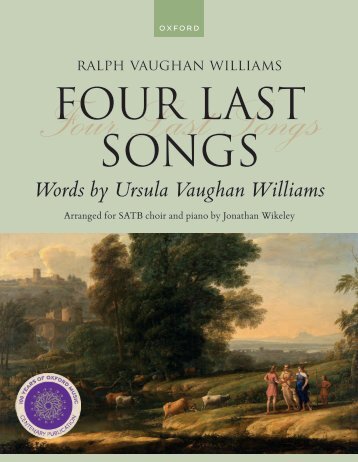

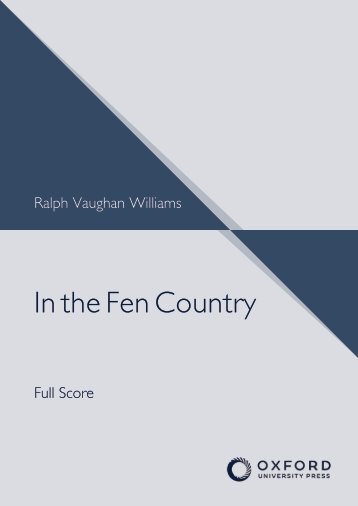
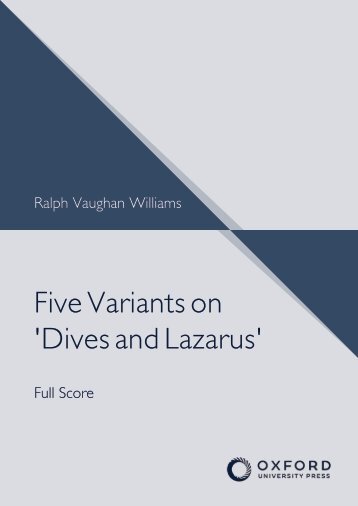
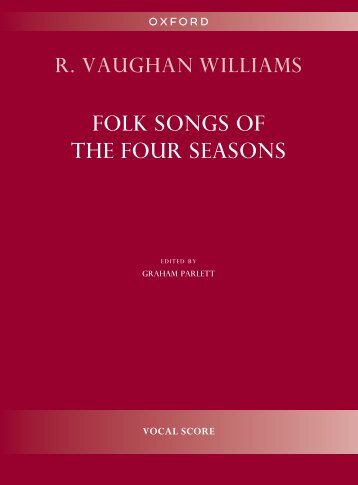




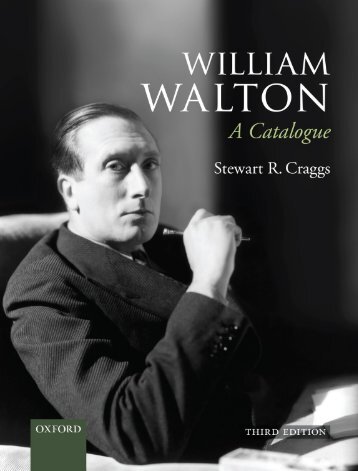



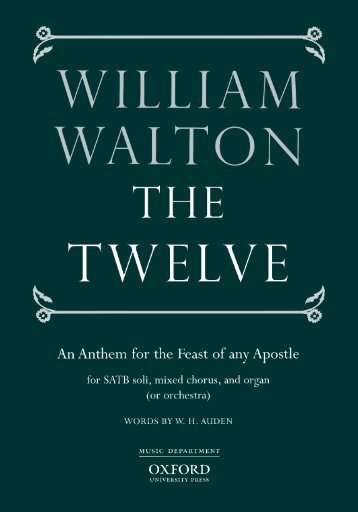


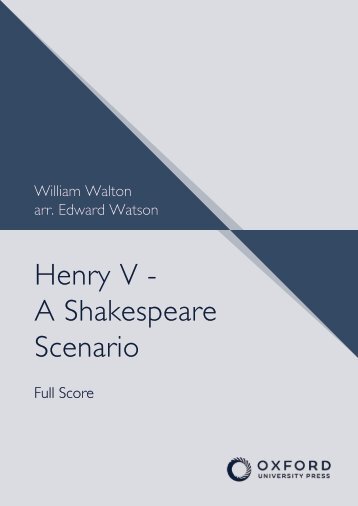






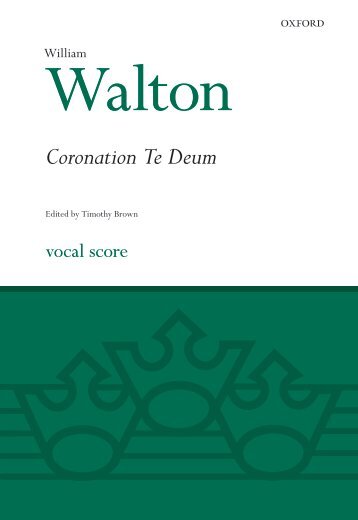
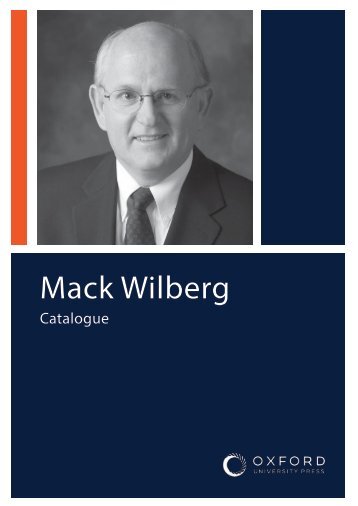
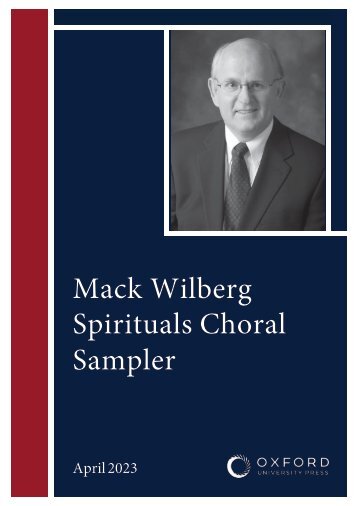
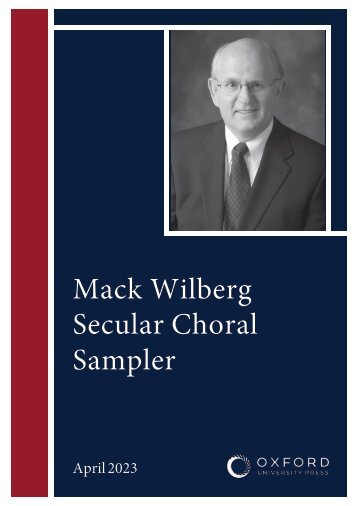




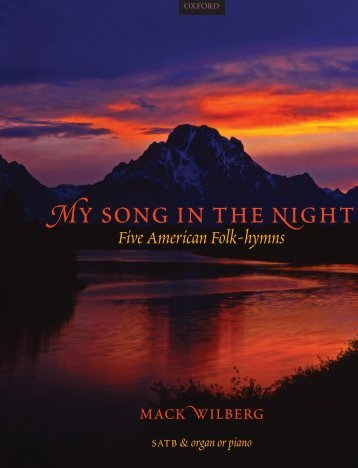
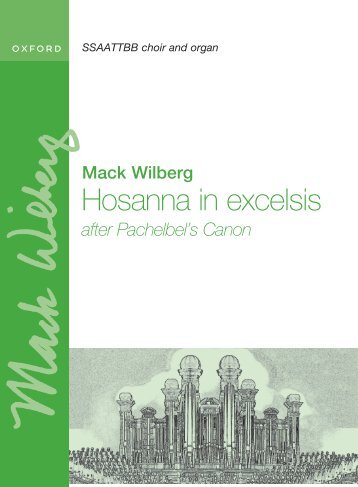
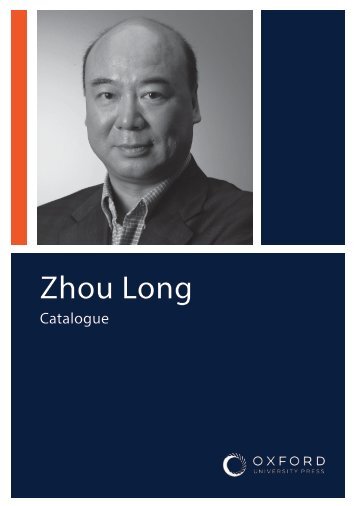

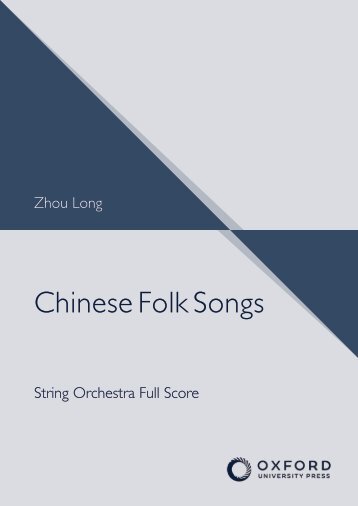

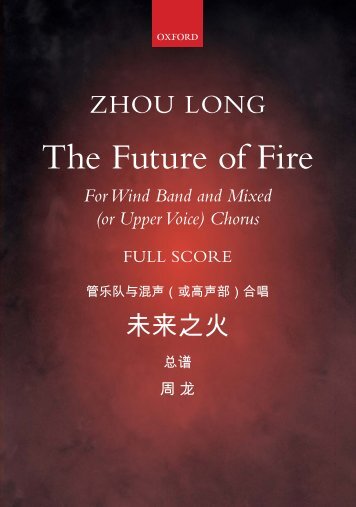





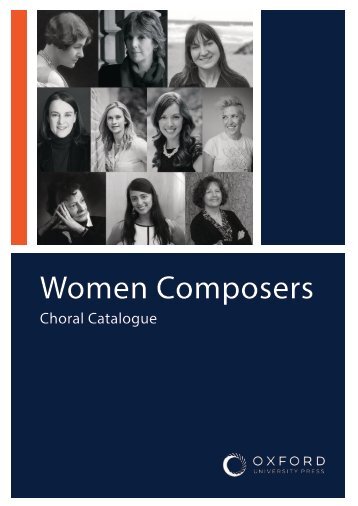

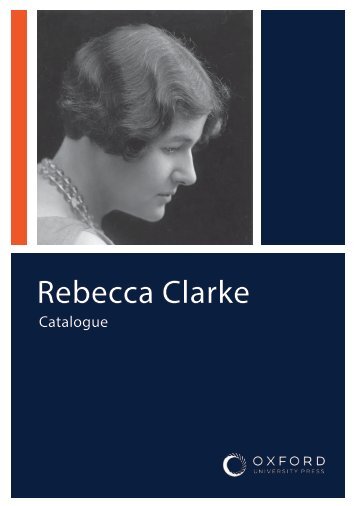

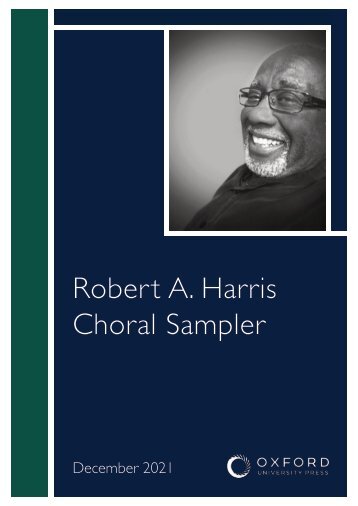
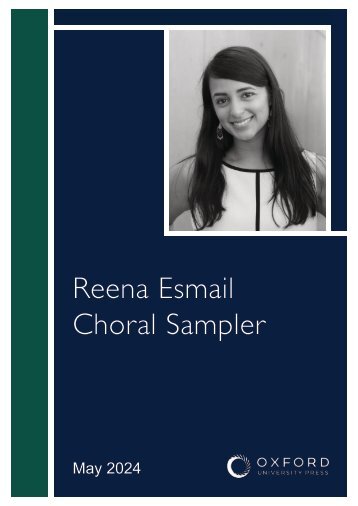
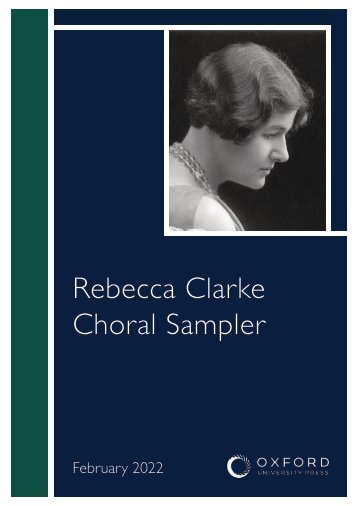
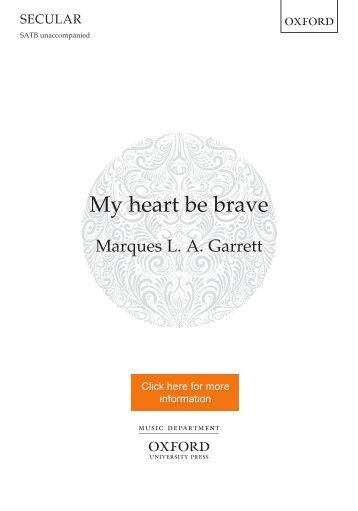
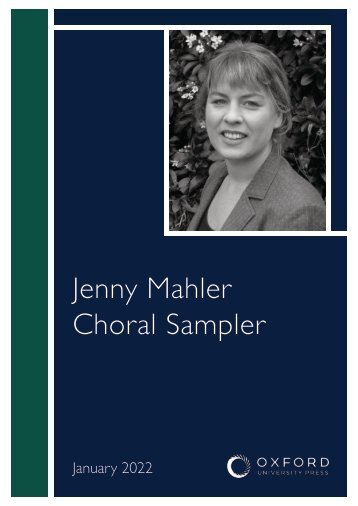
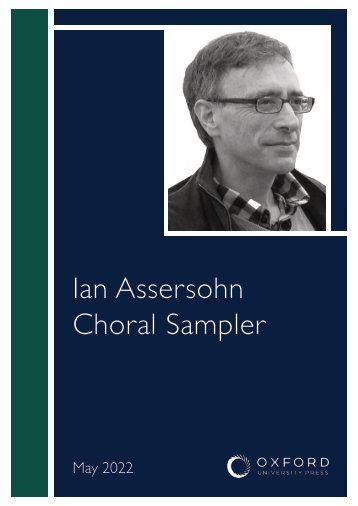
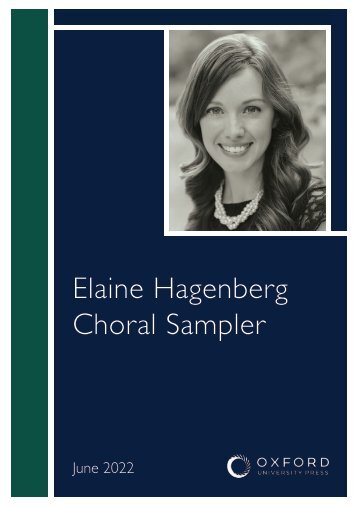
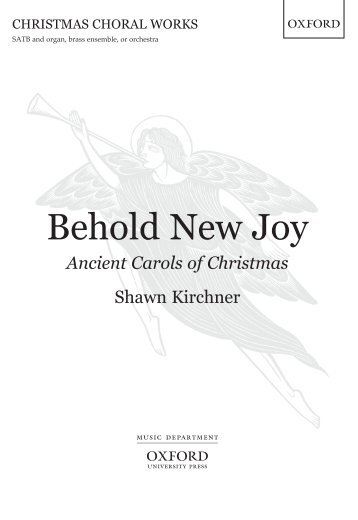
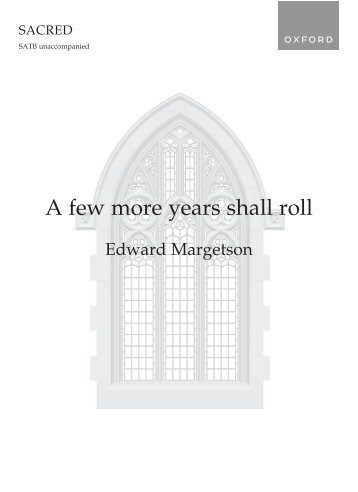
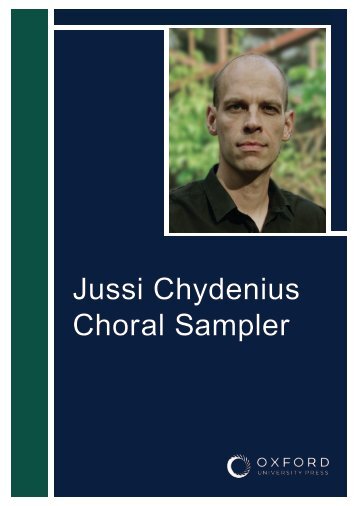


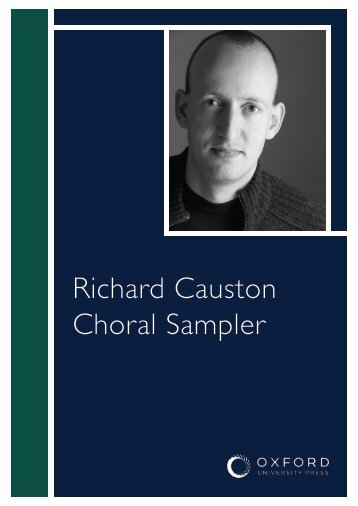
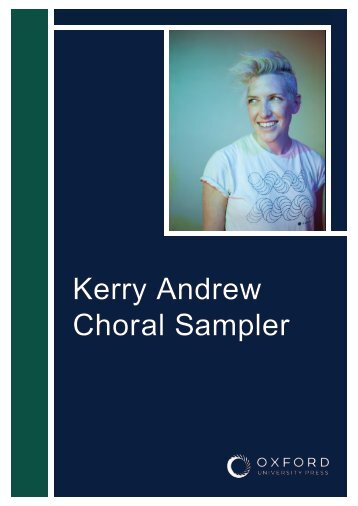
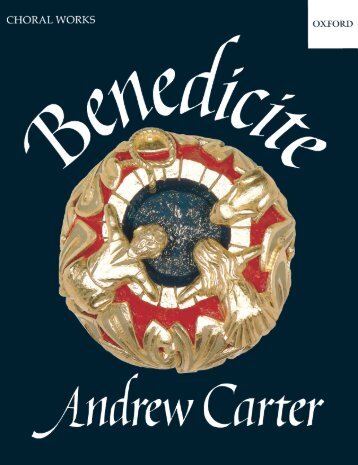
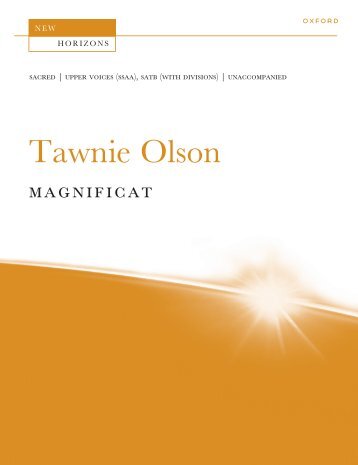


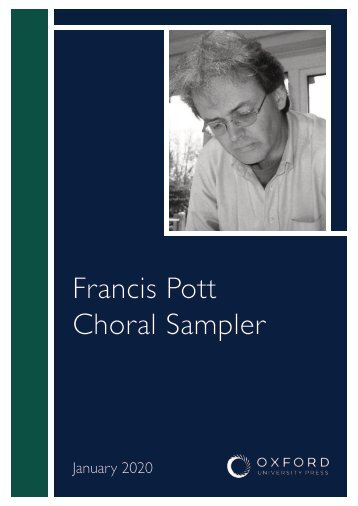

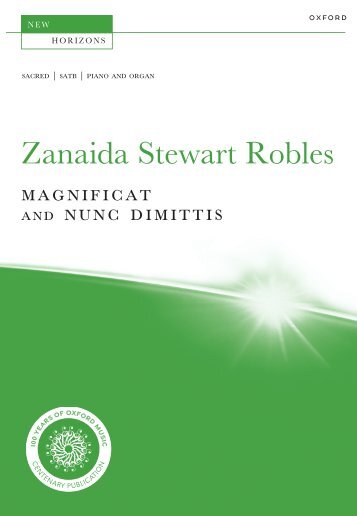

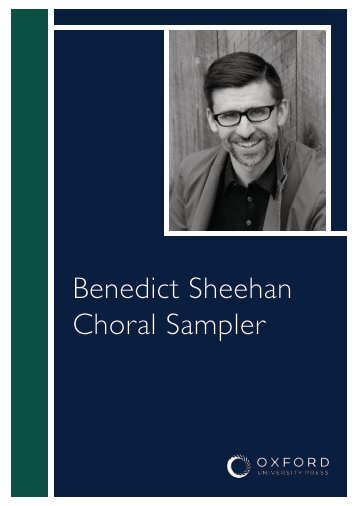
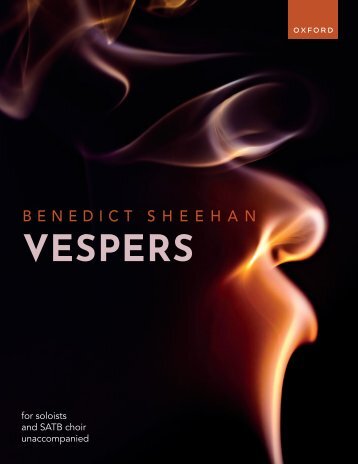


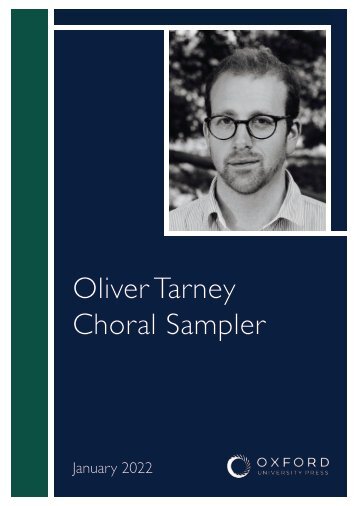

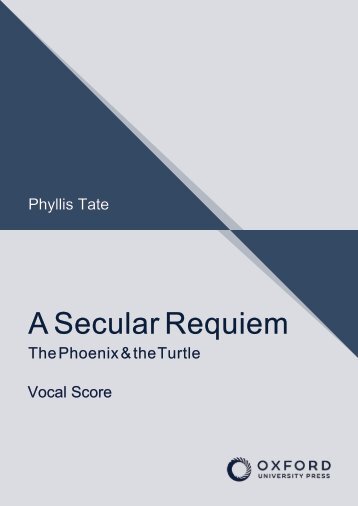
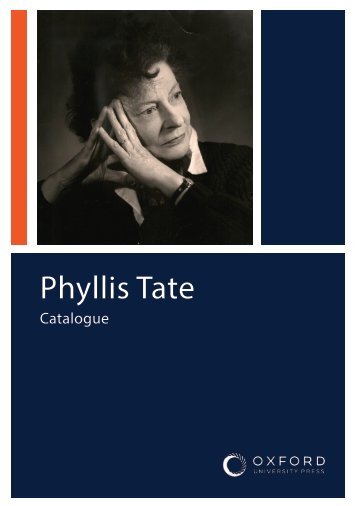
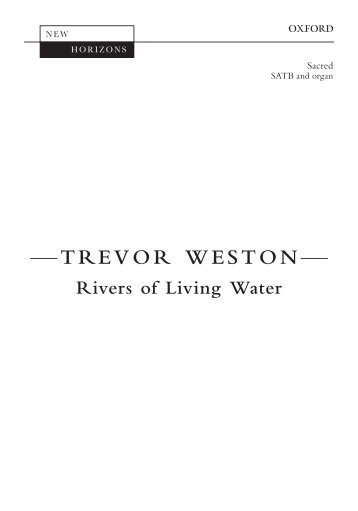
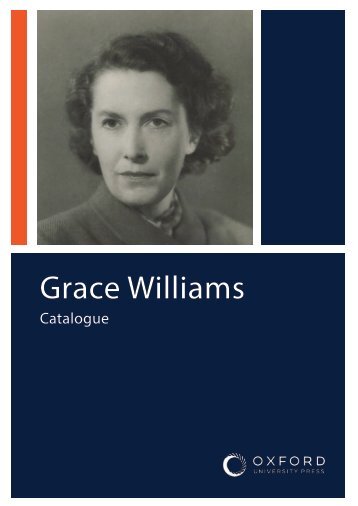
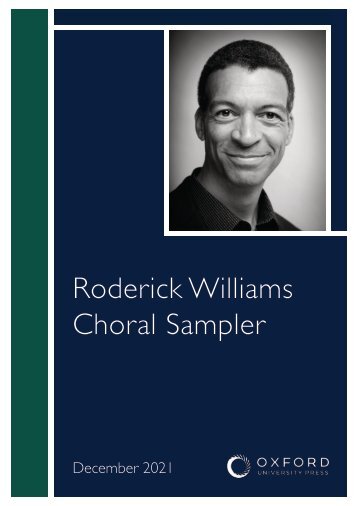
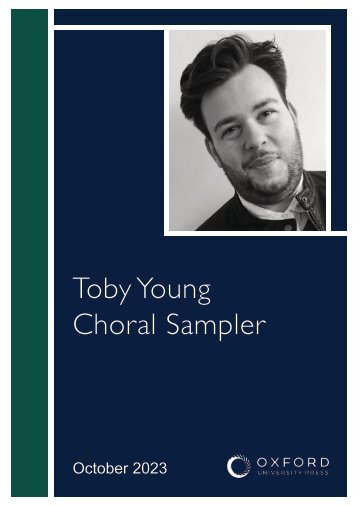


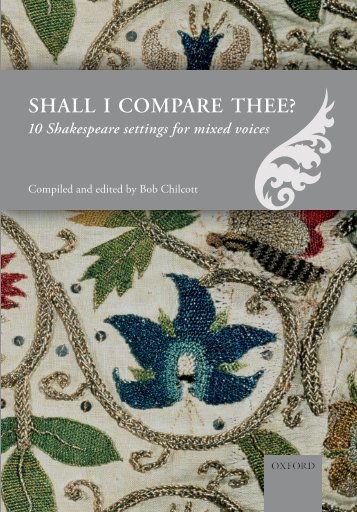
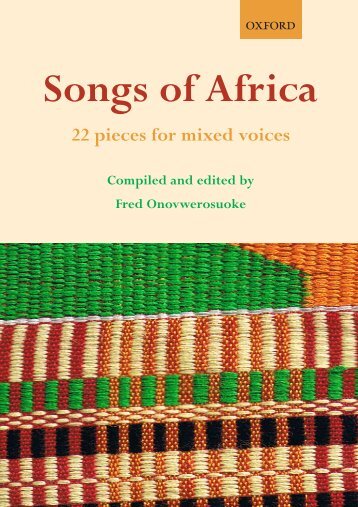



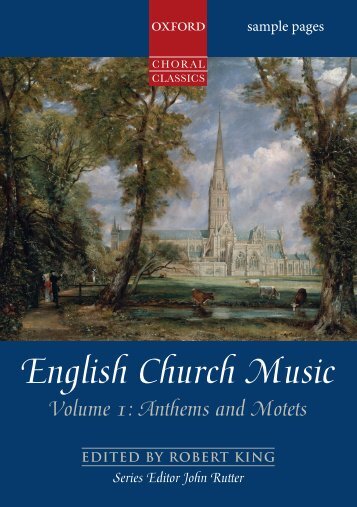
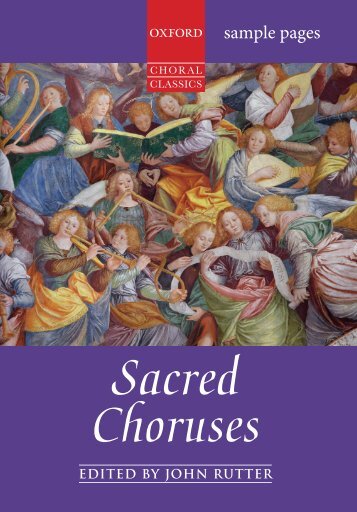

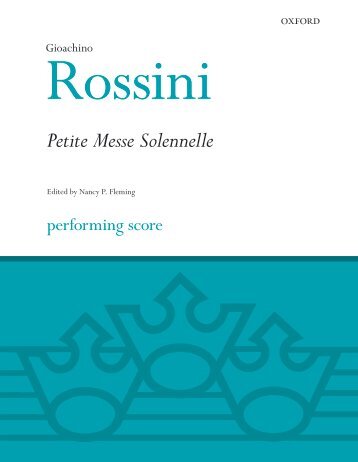
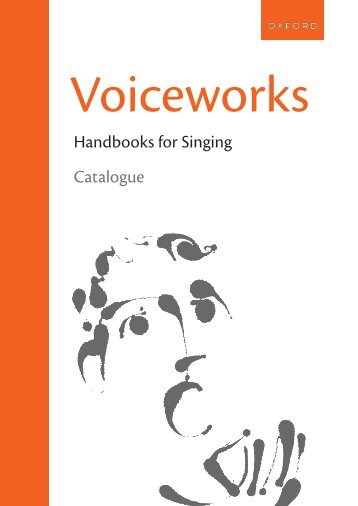



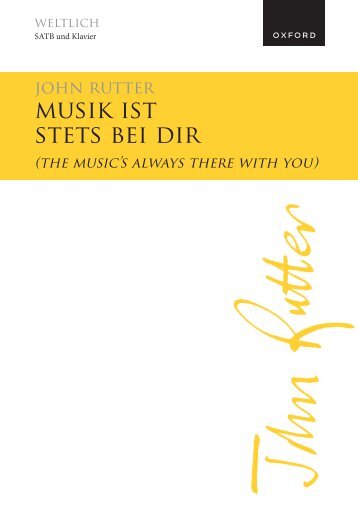
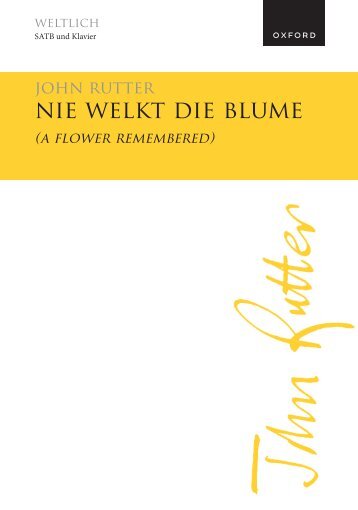

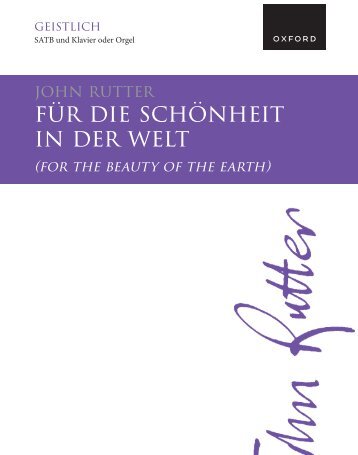
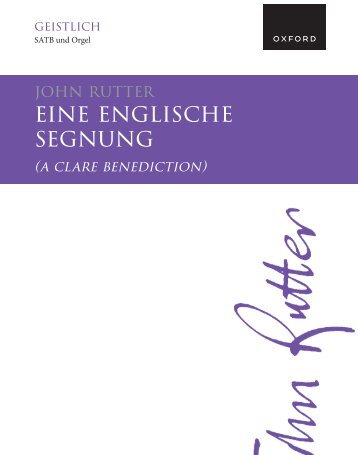

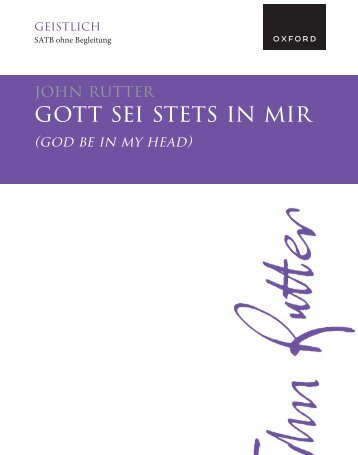


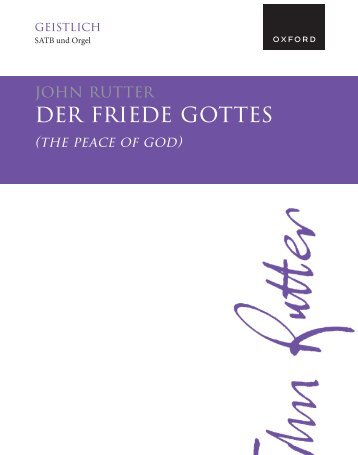

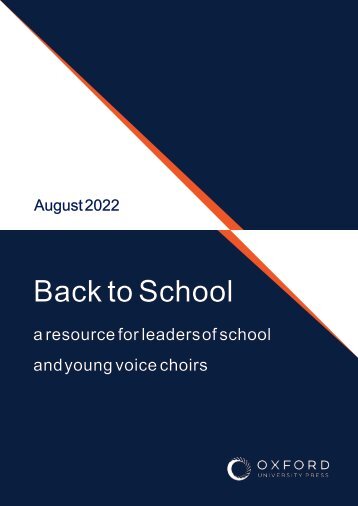
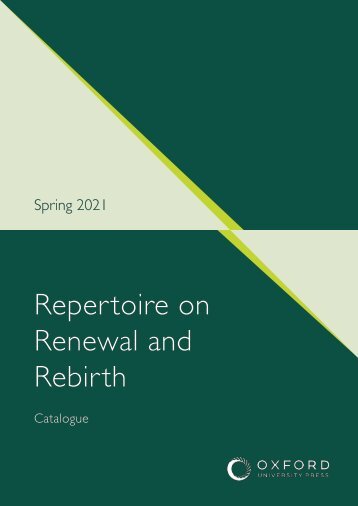
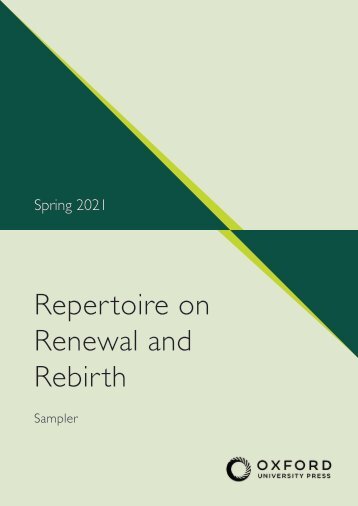
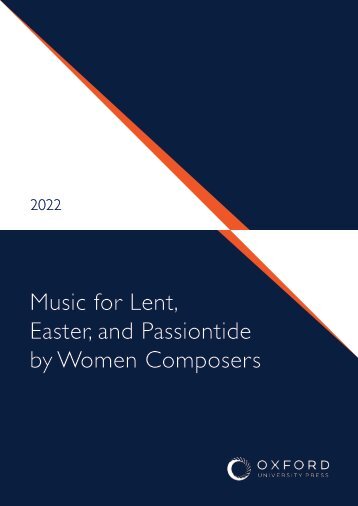
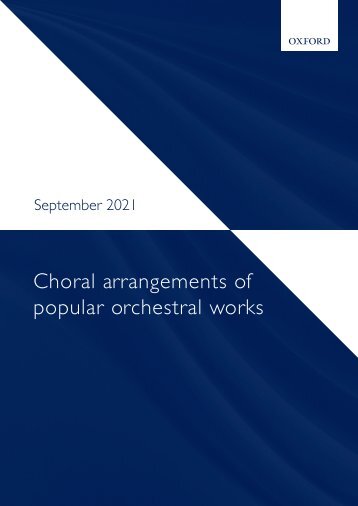
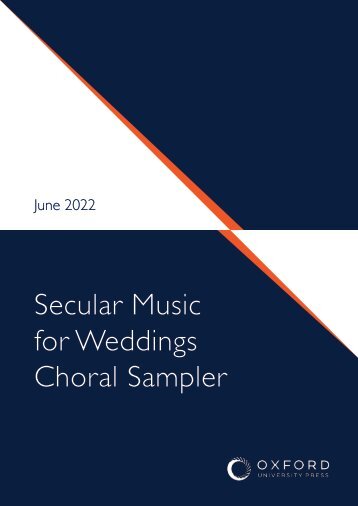

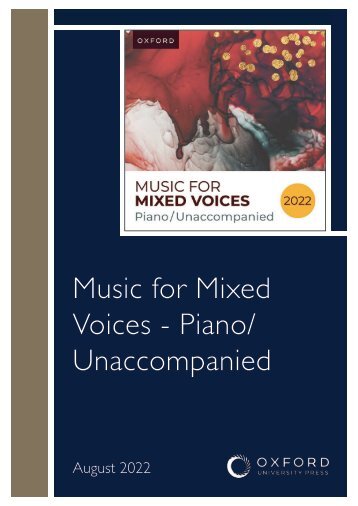
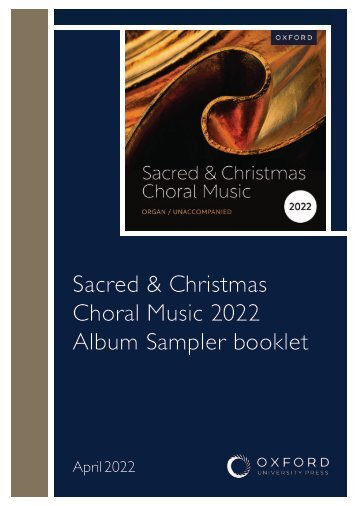
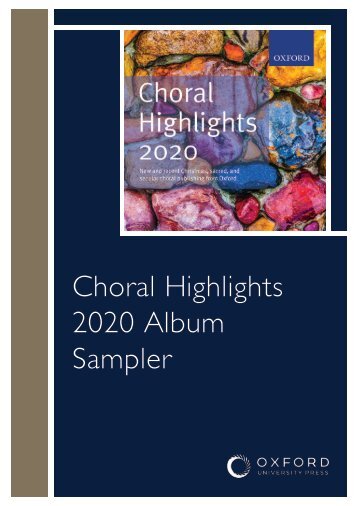
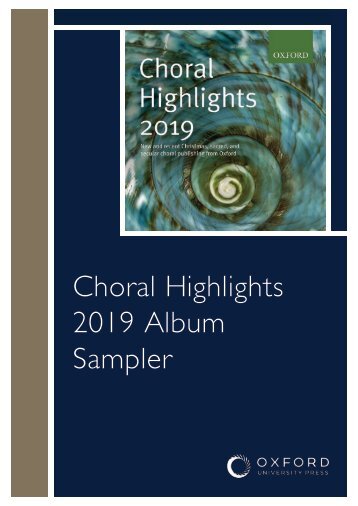
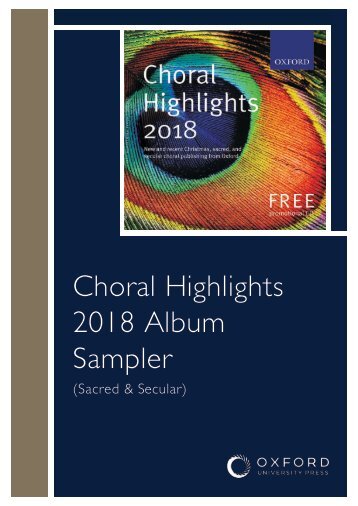

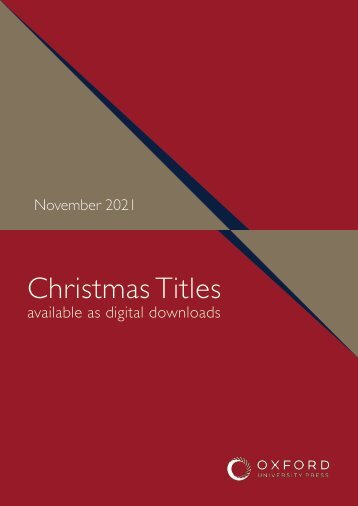
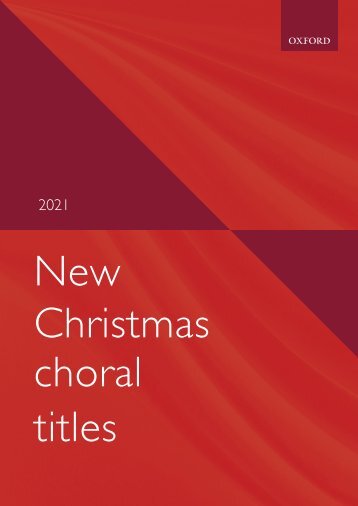
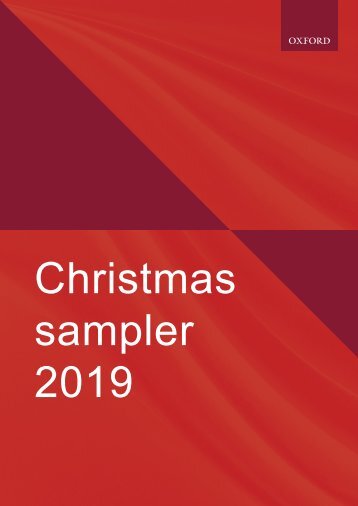
Facebook
Twitter
Email